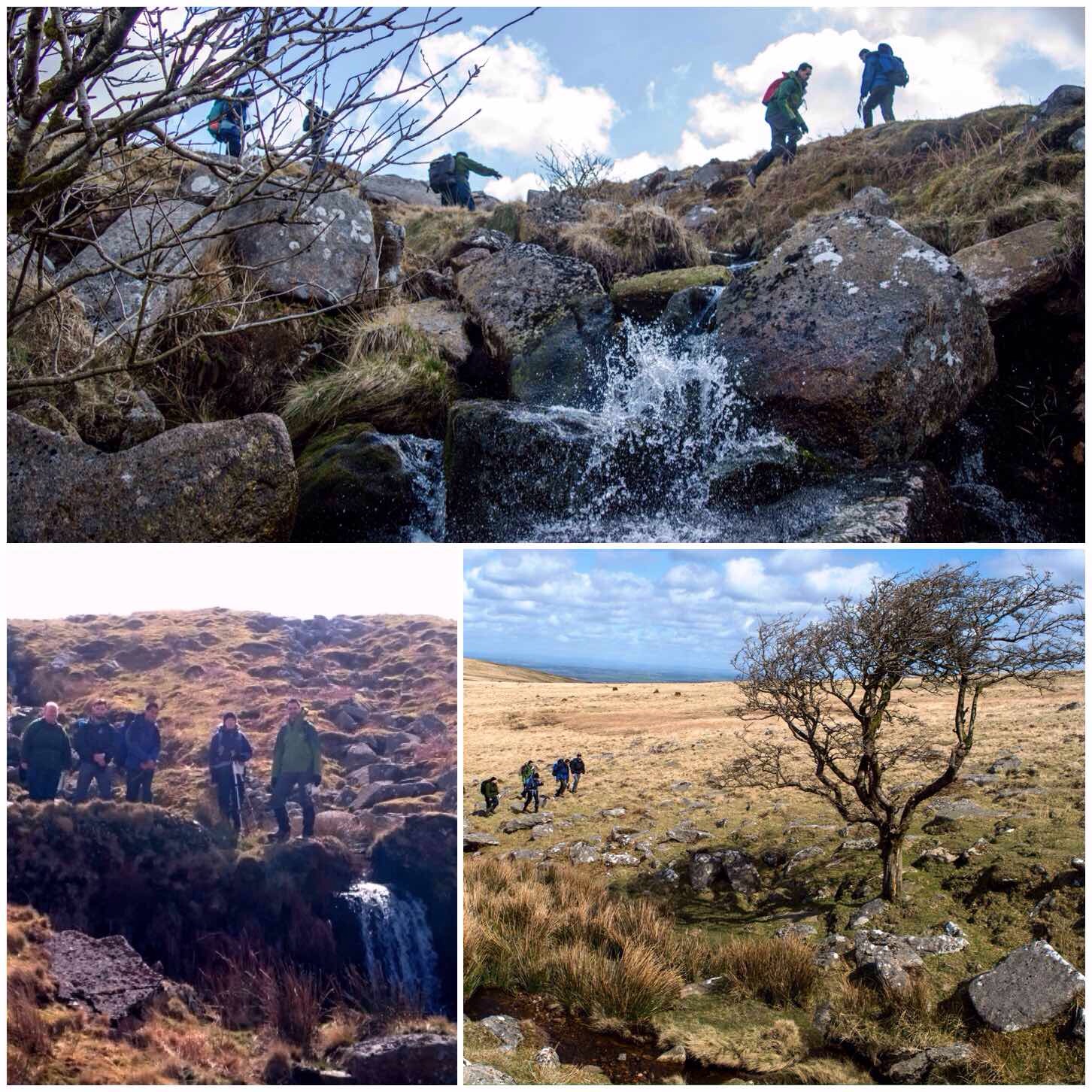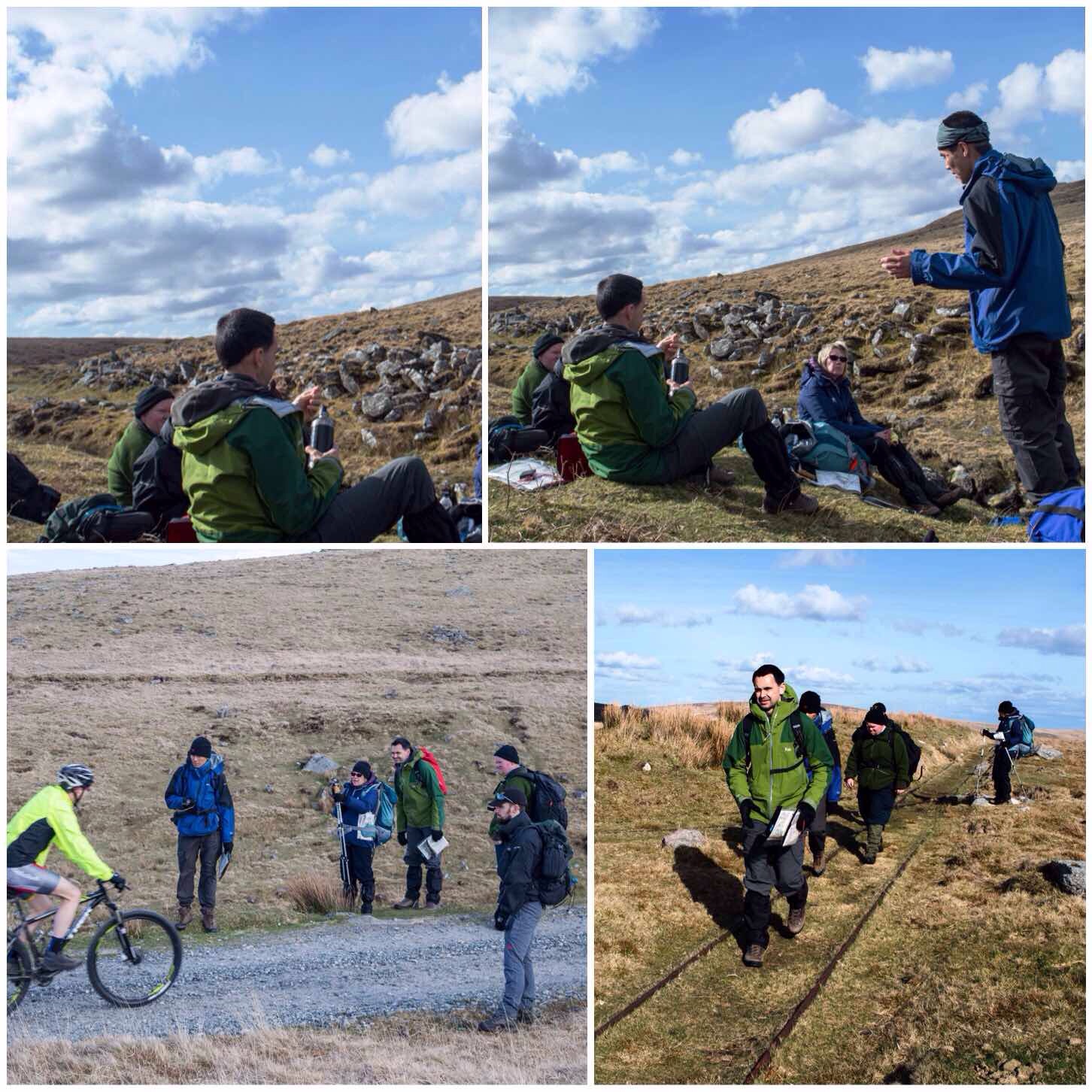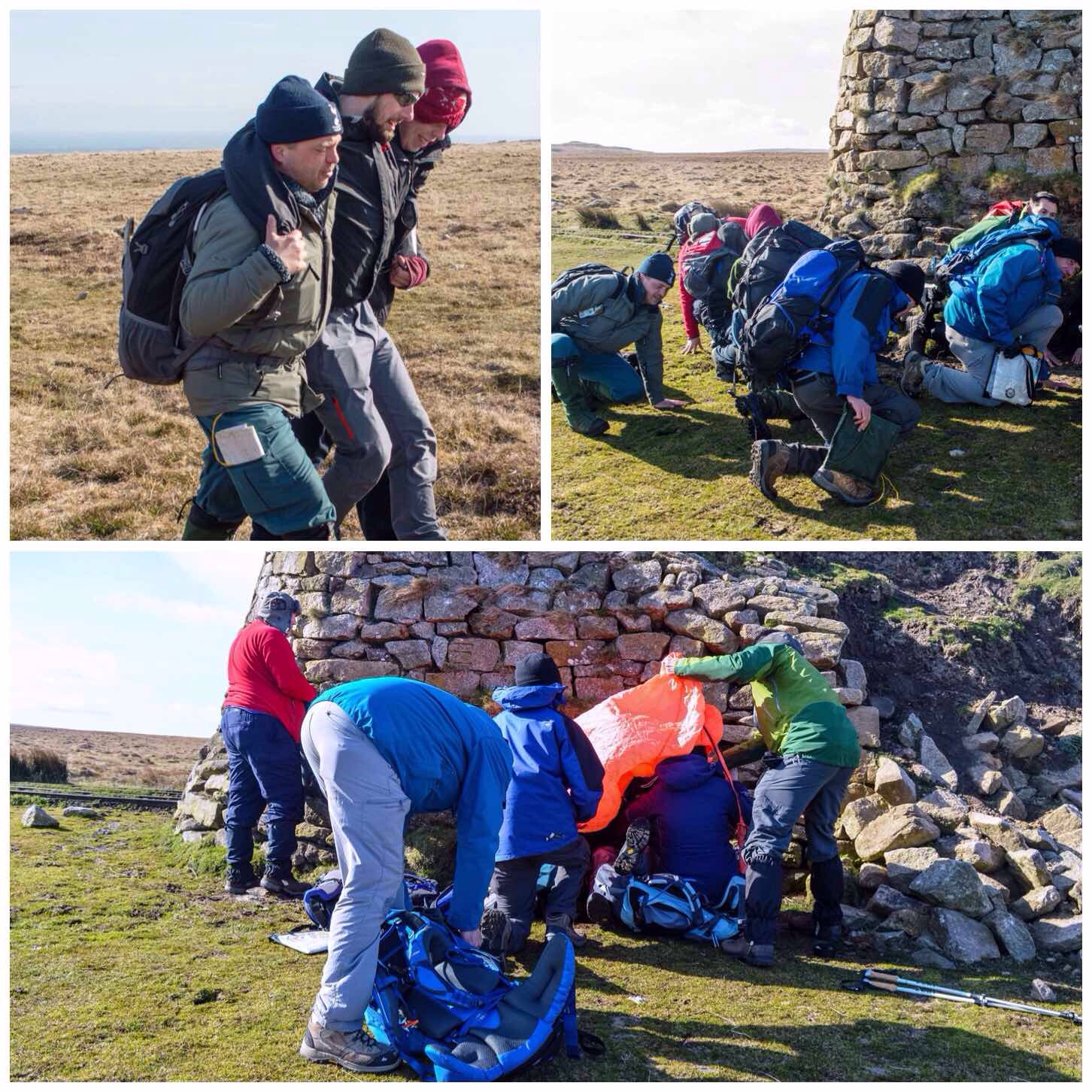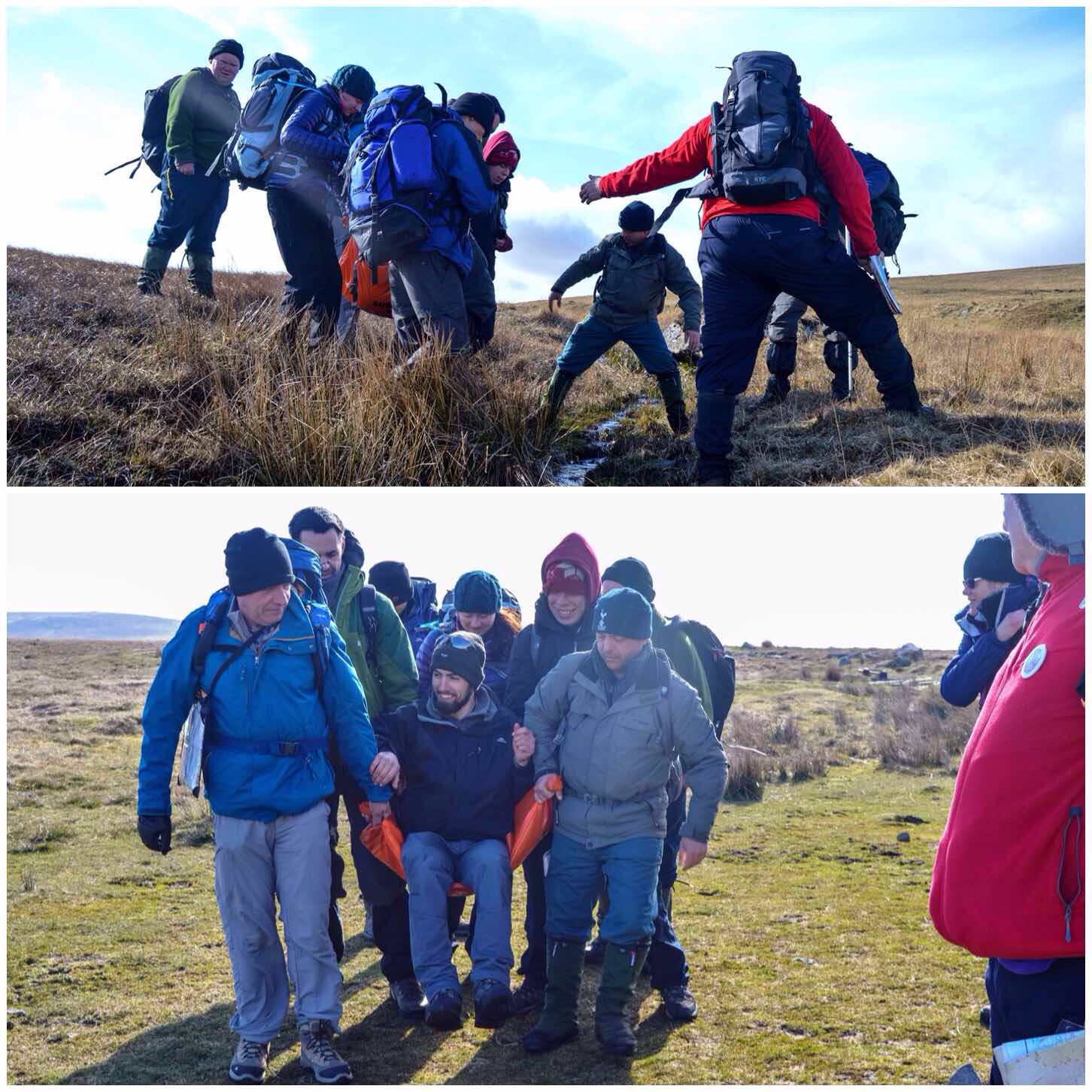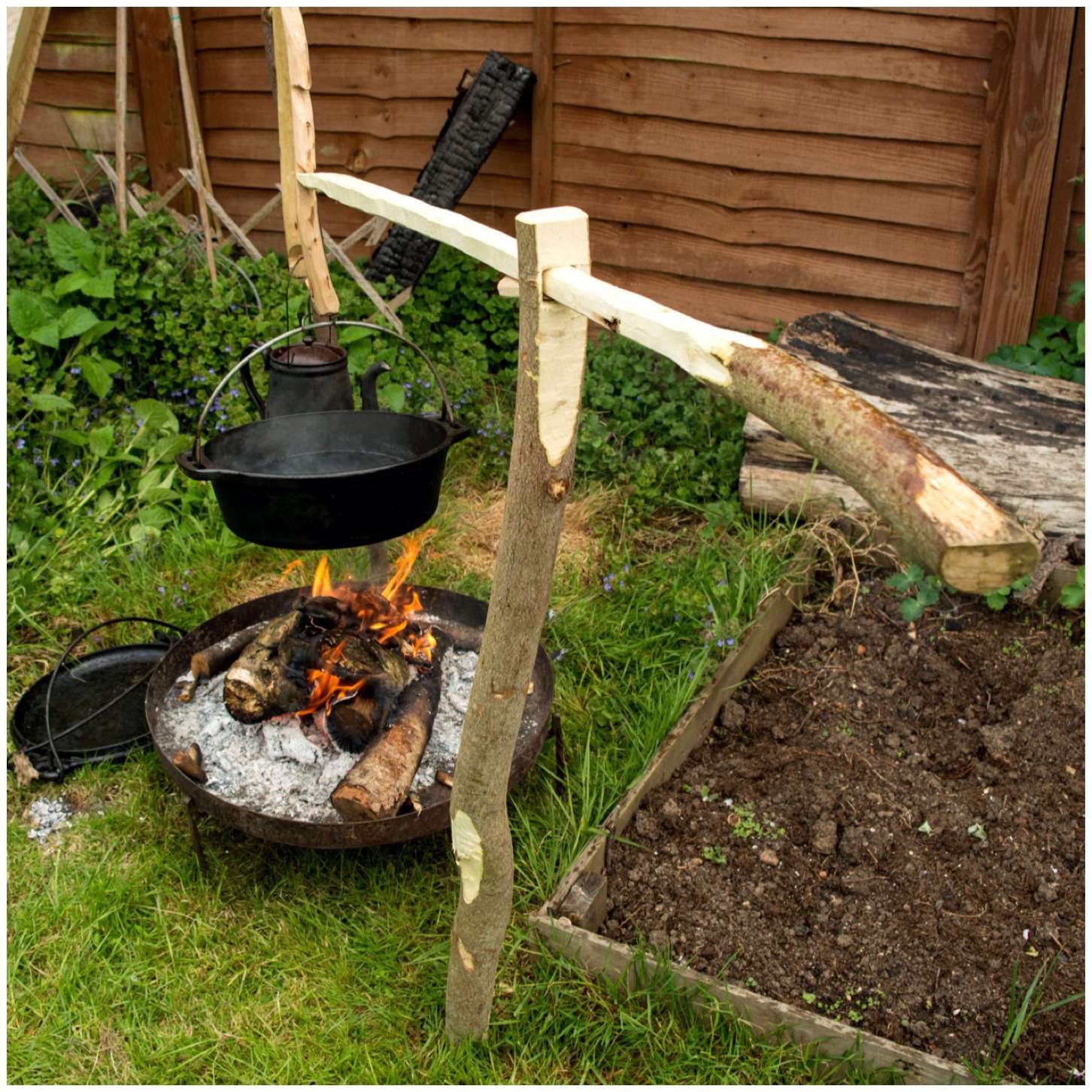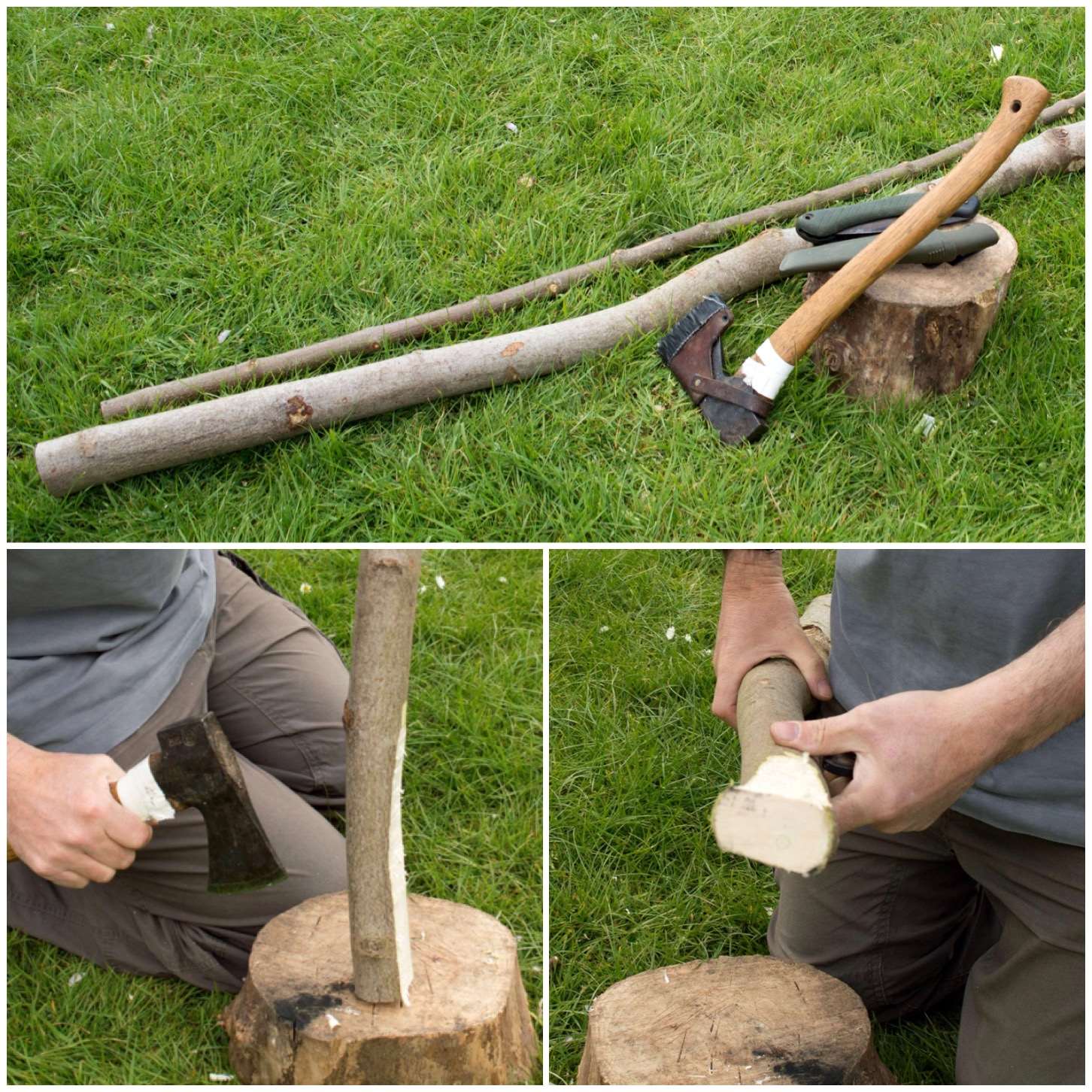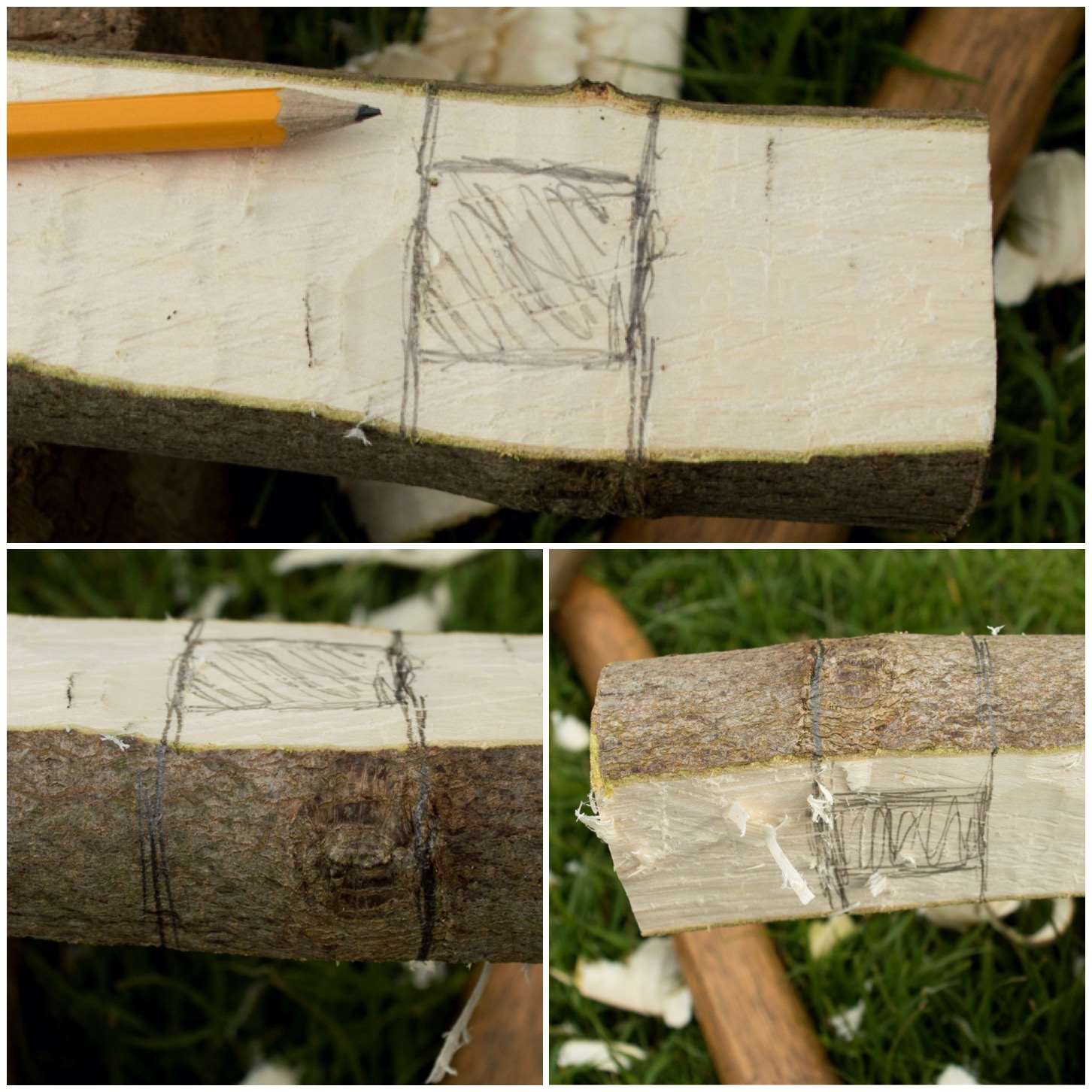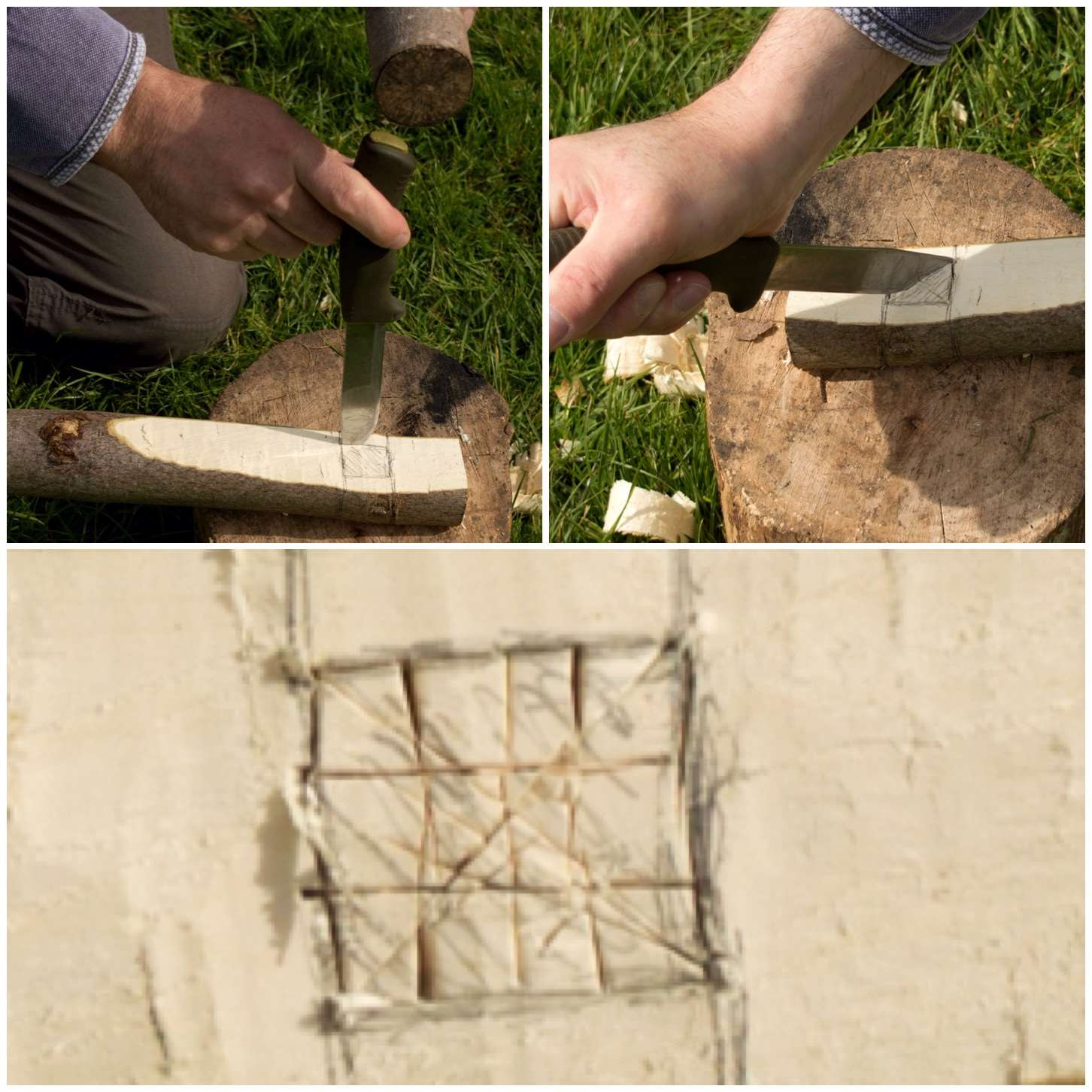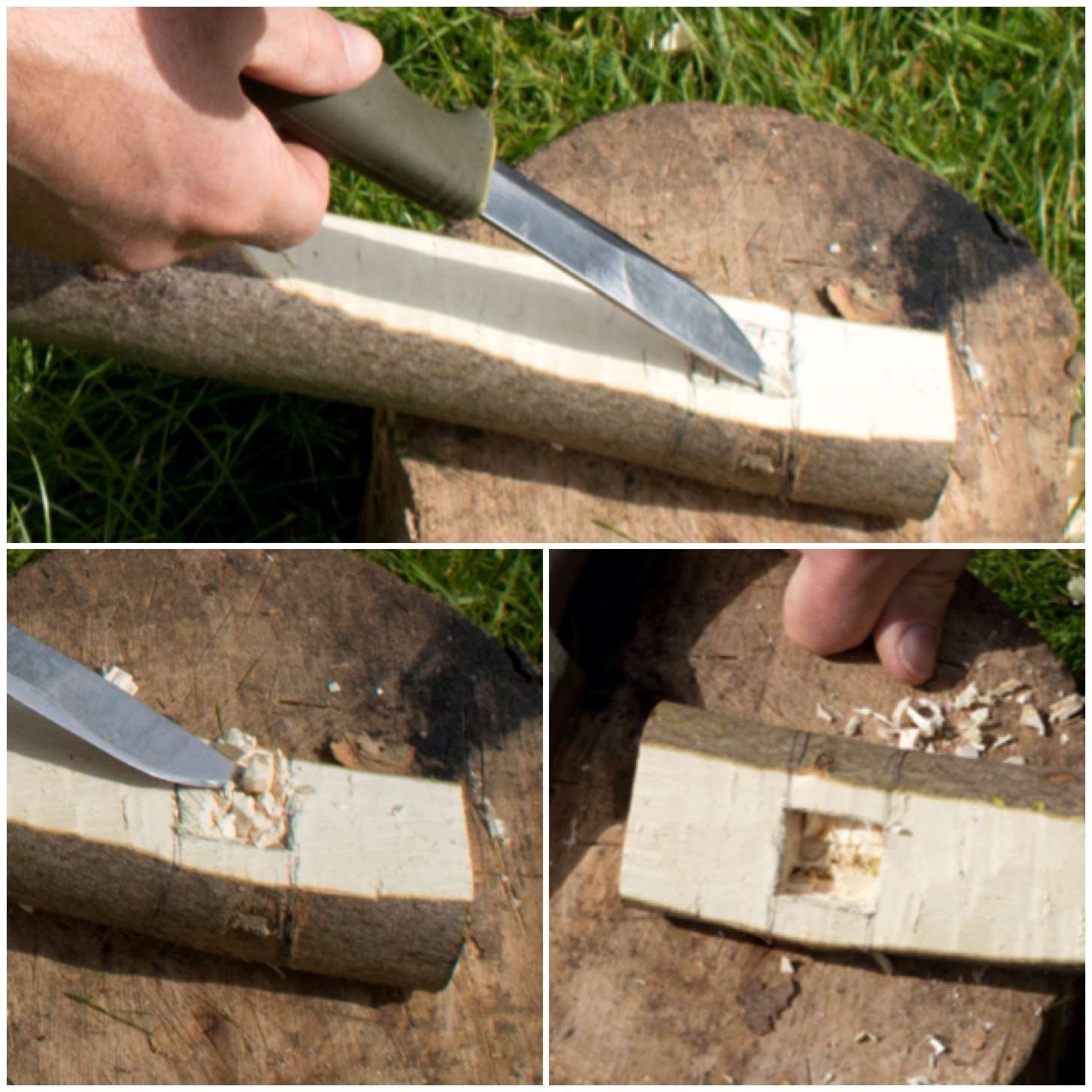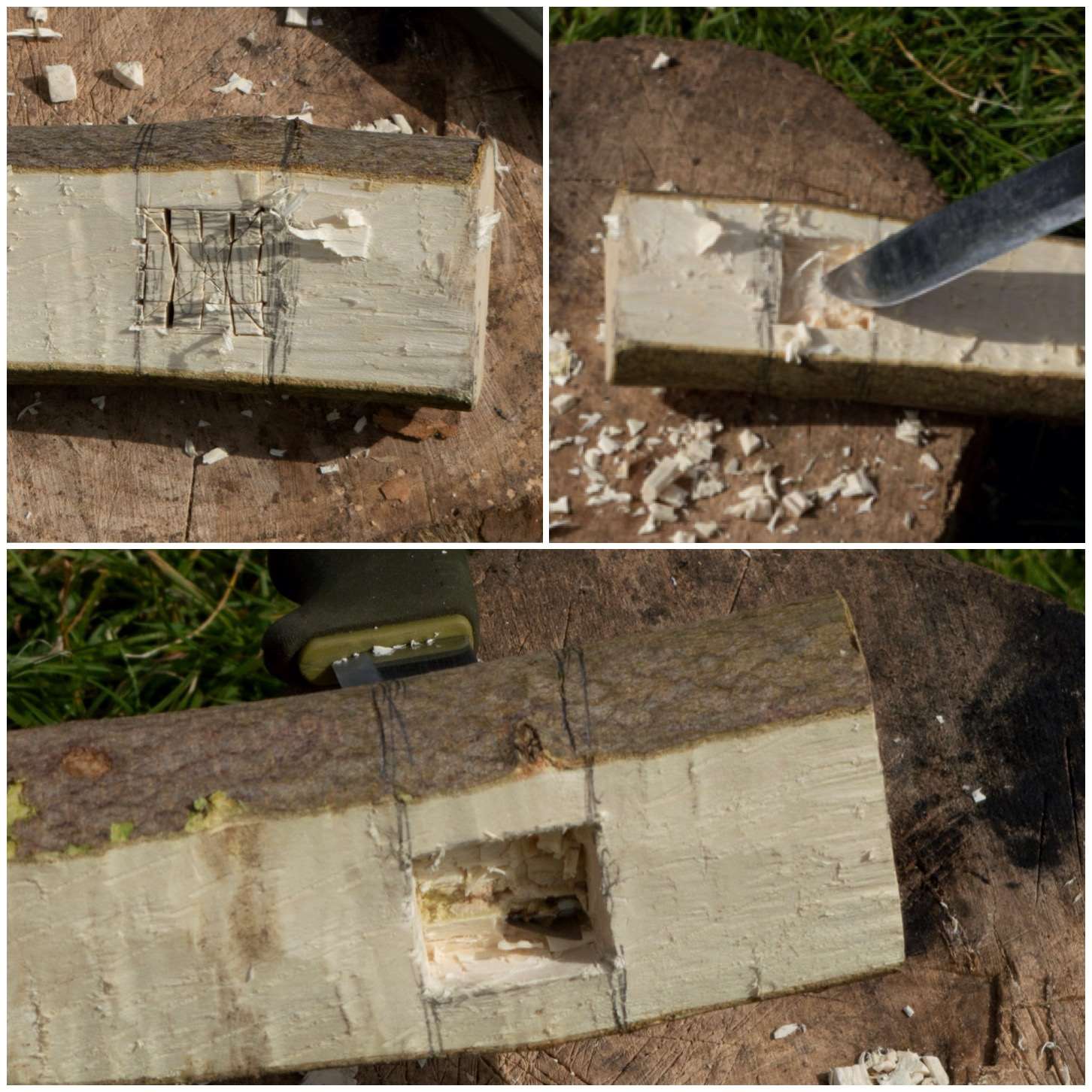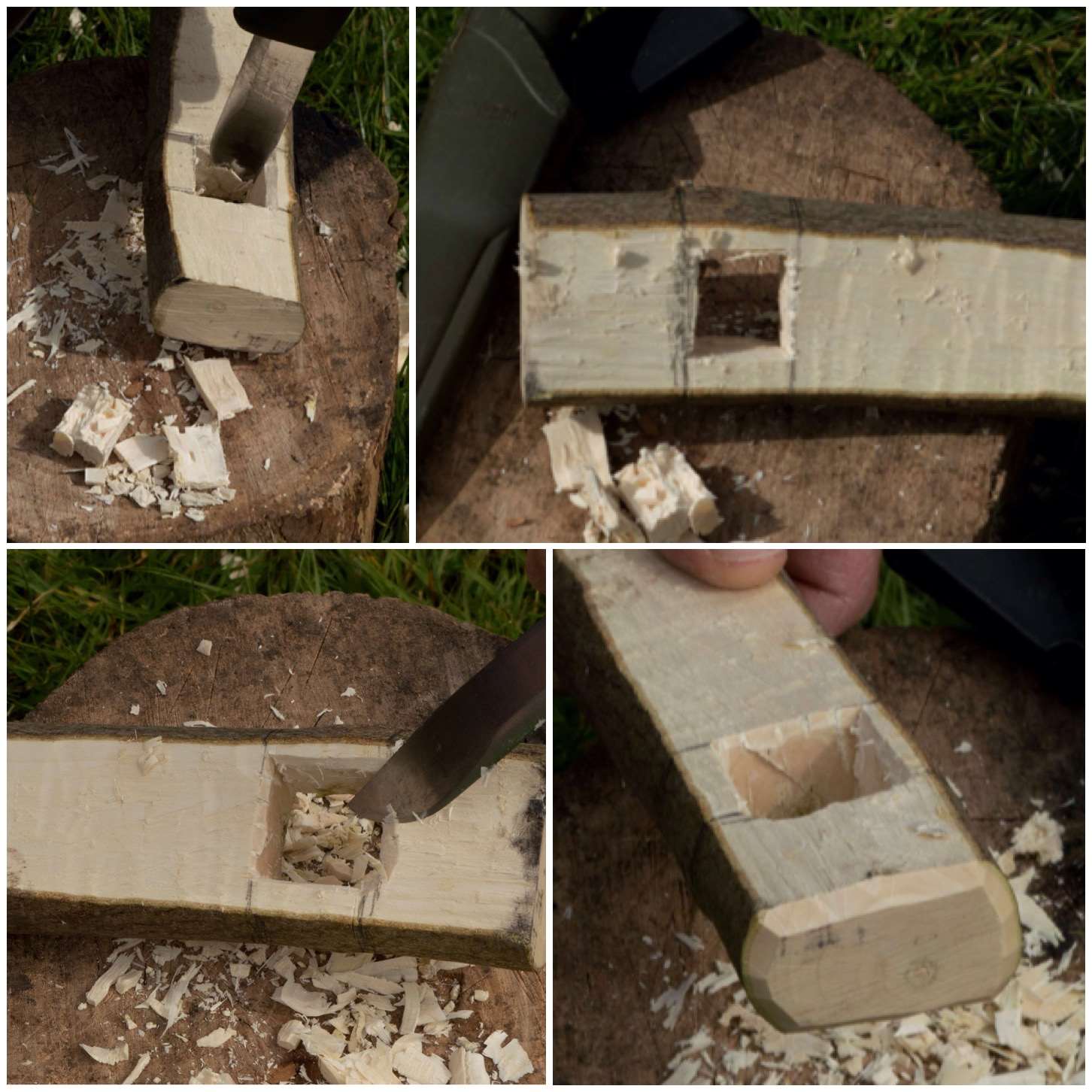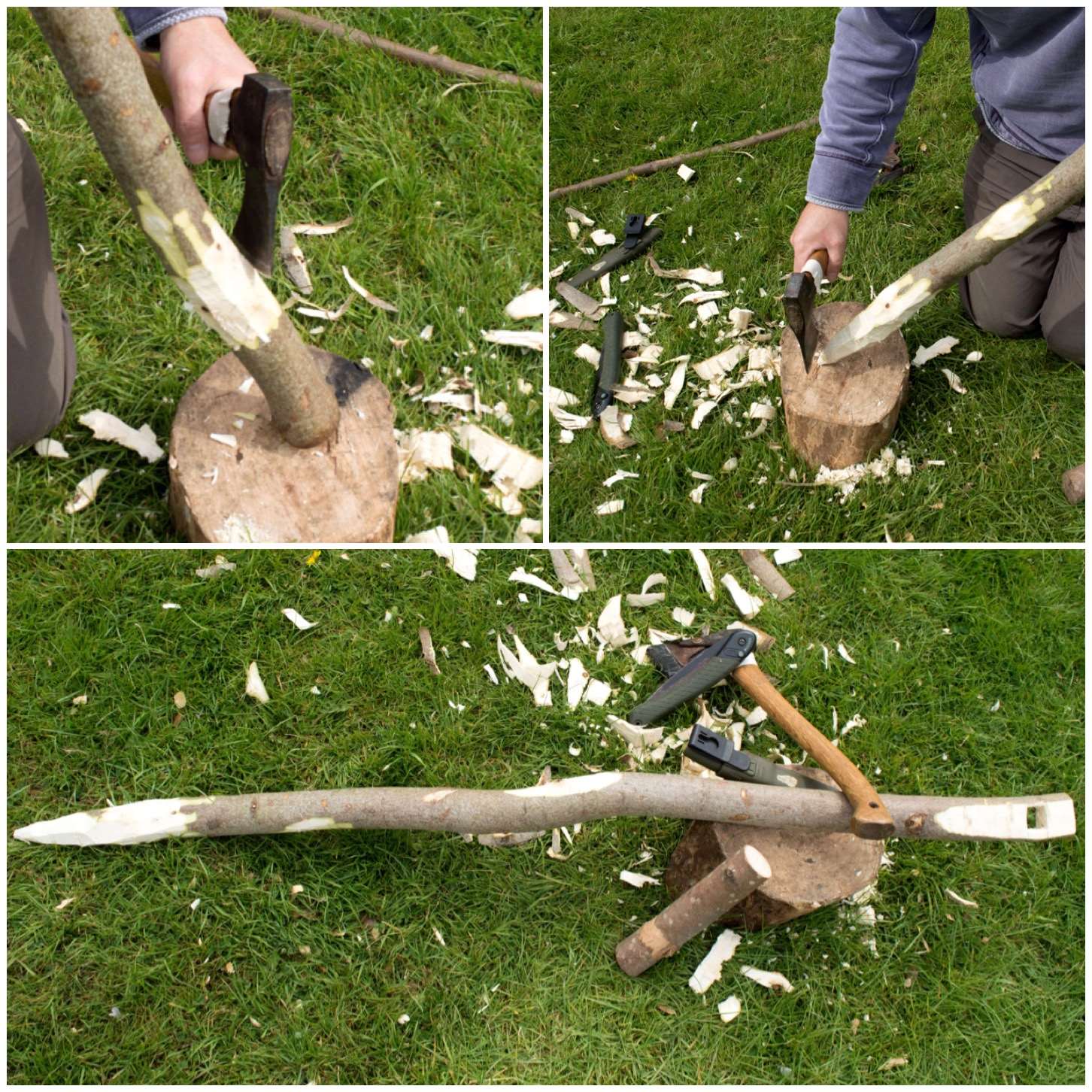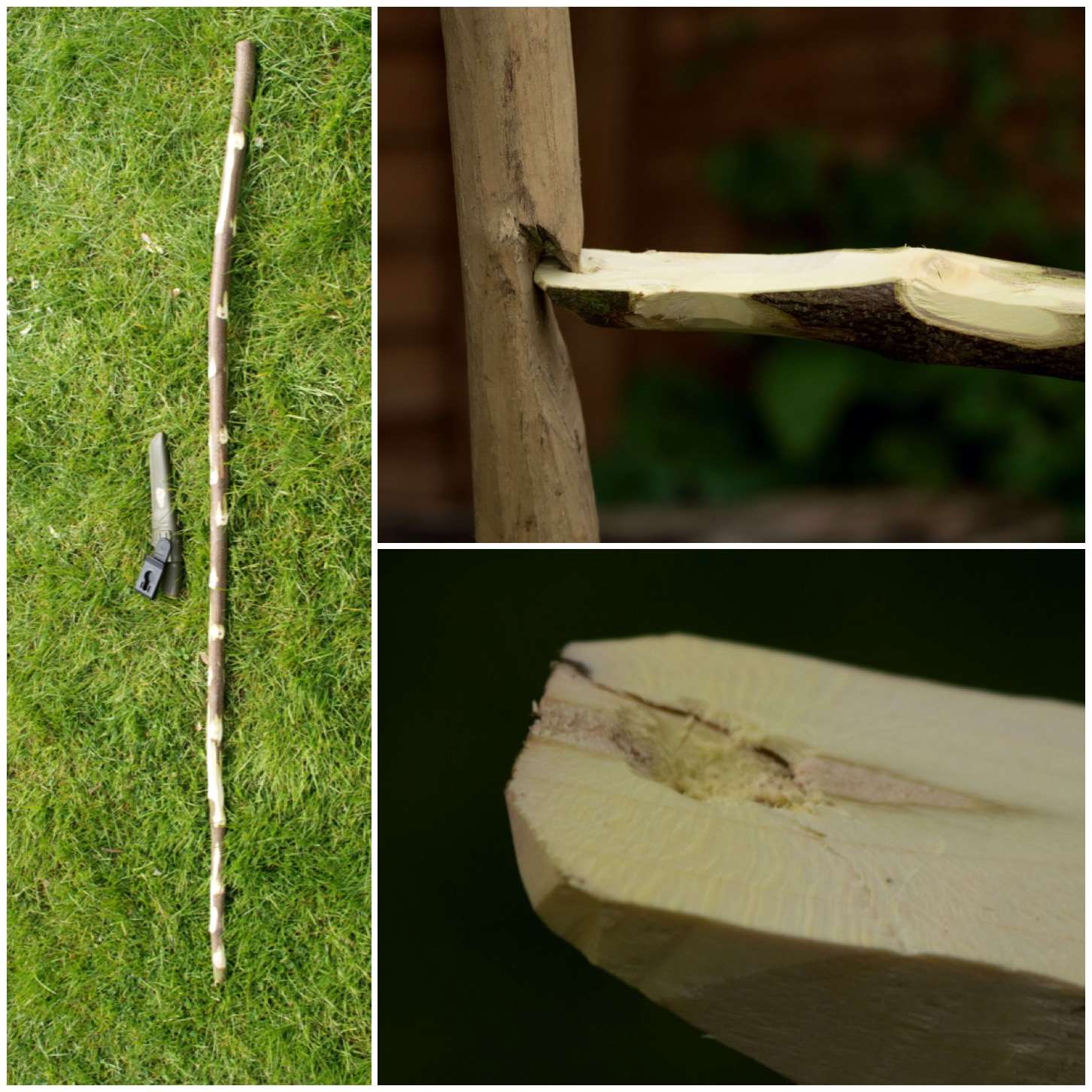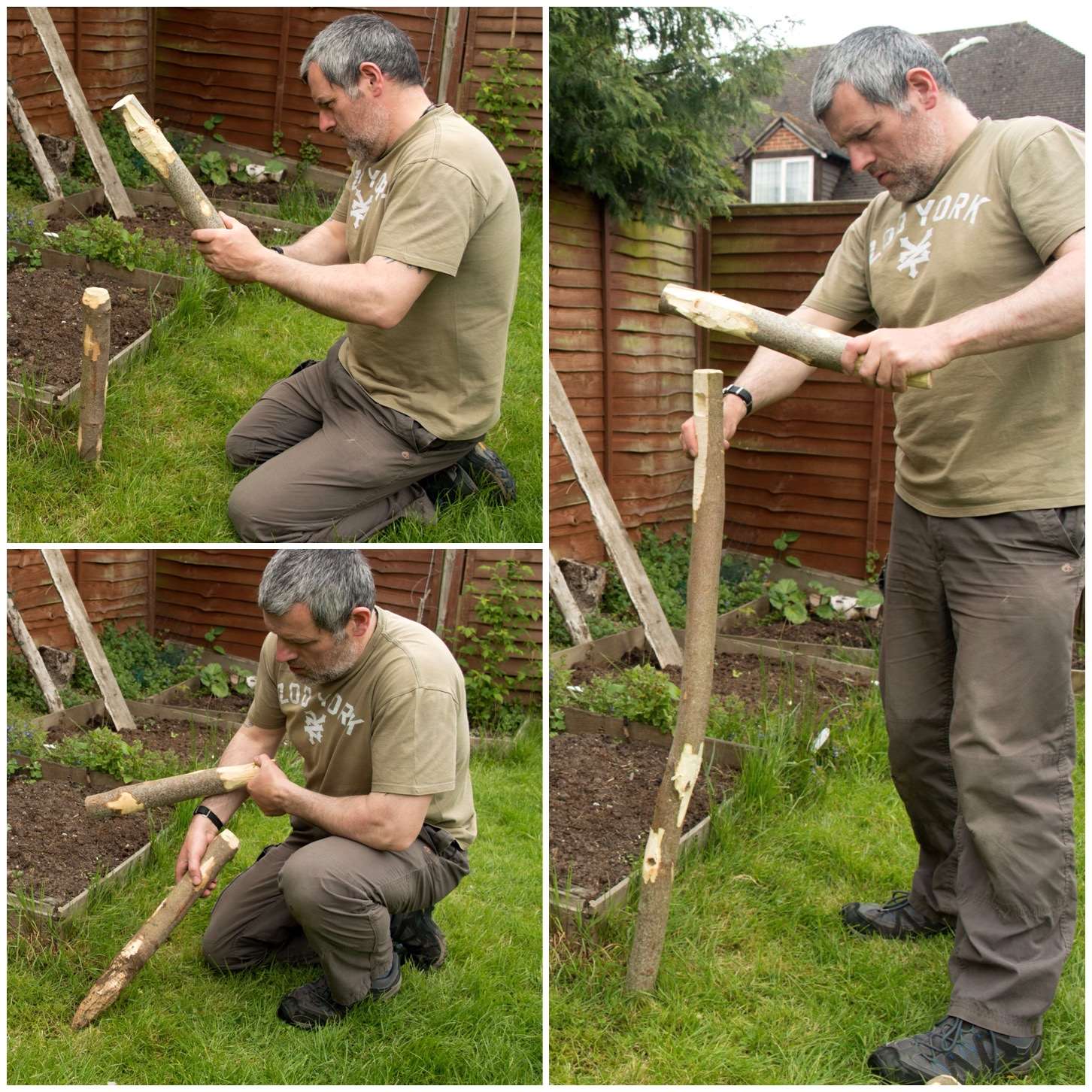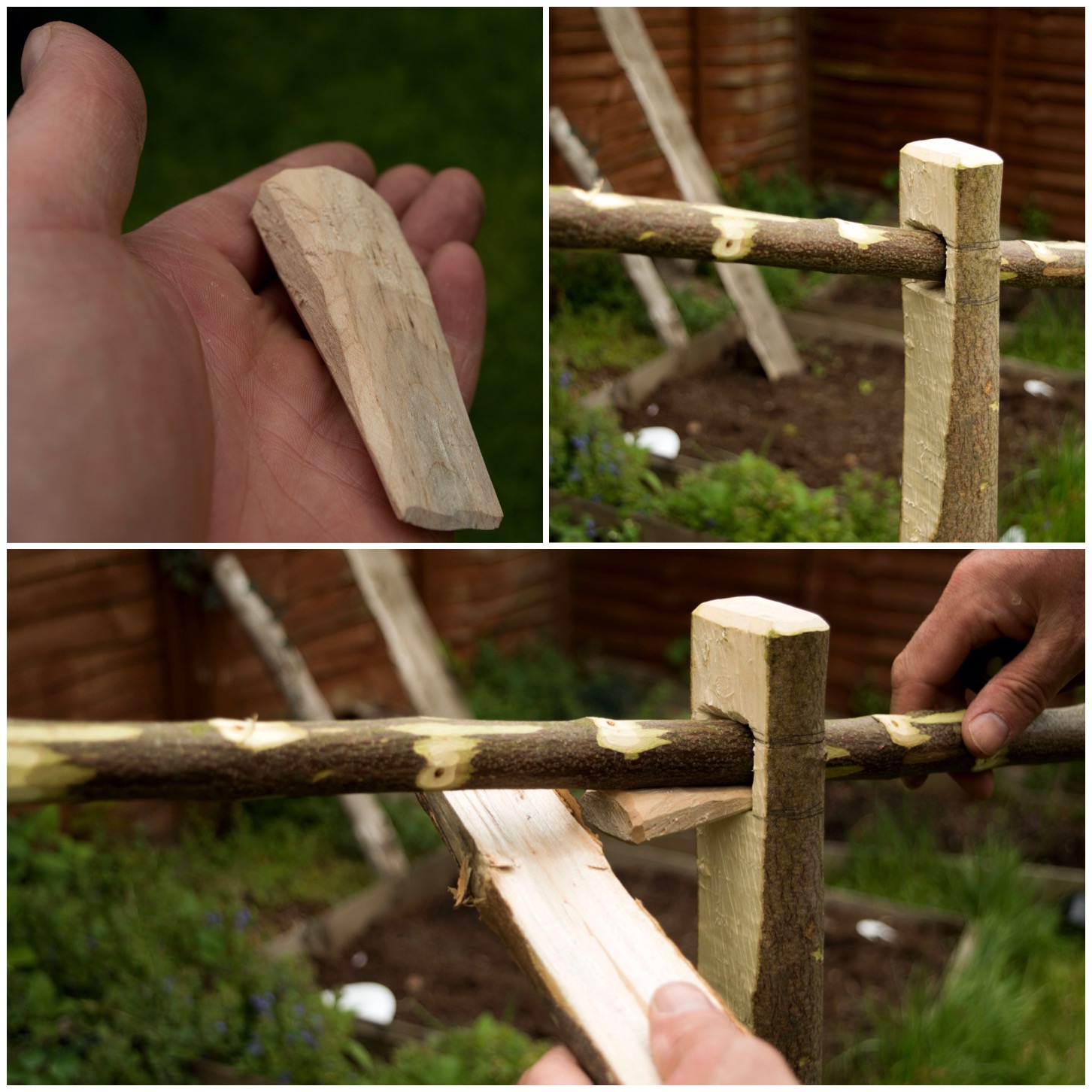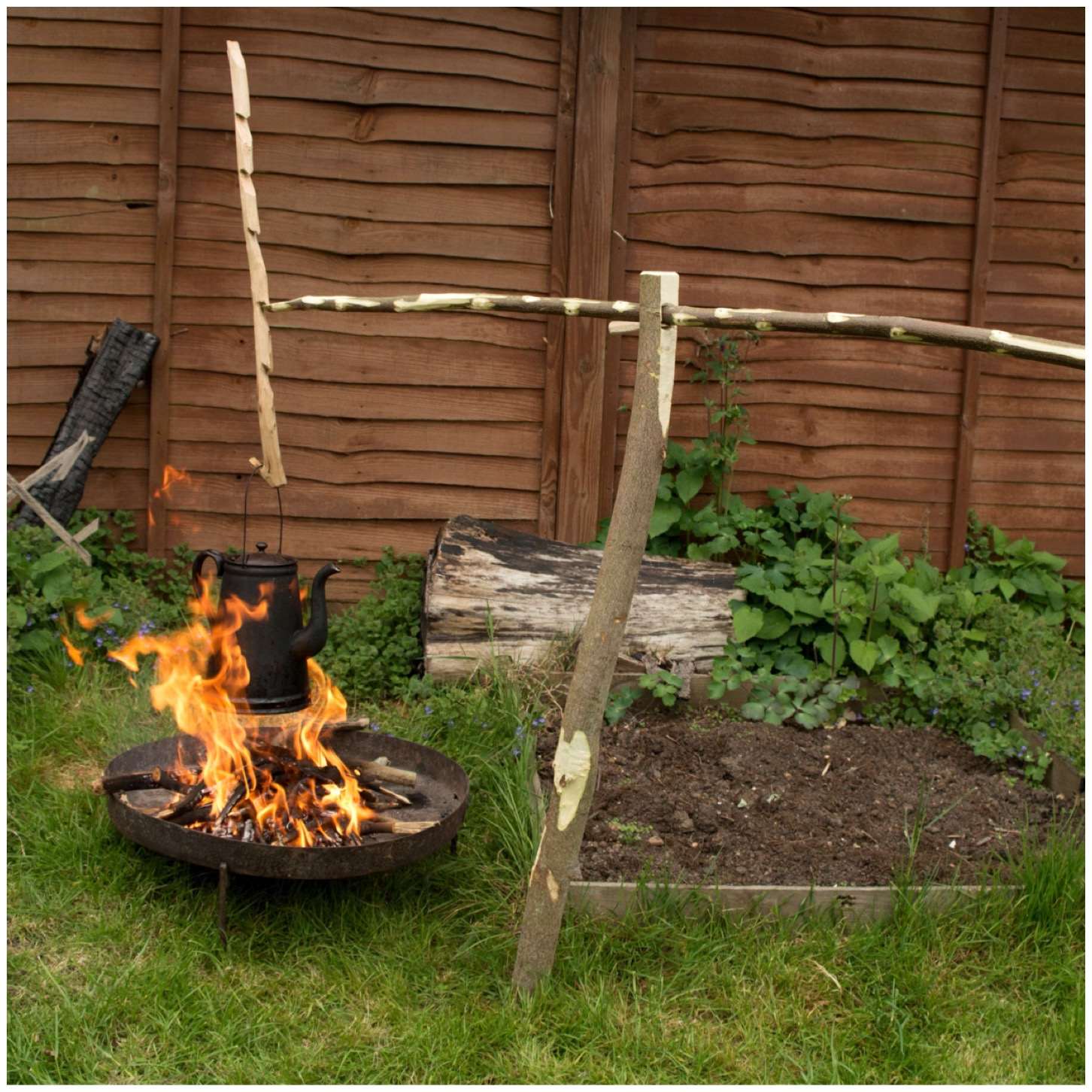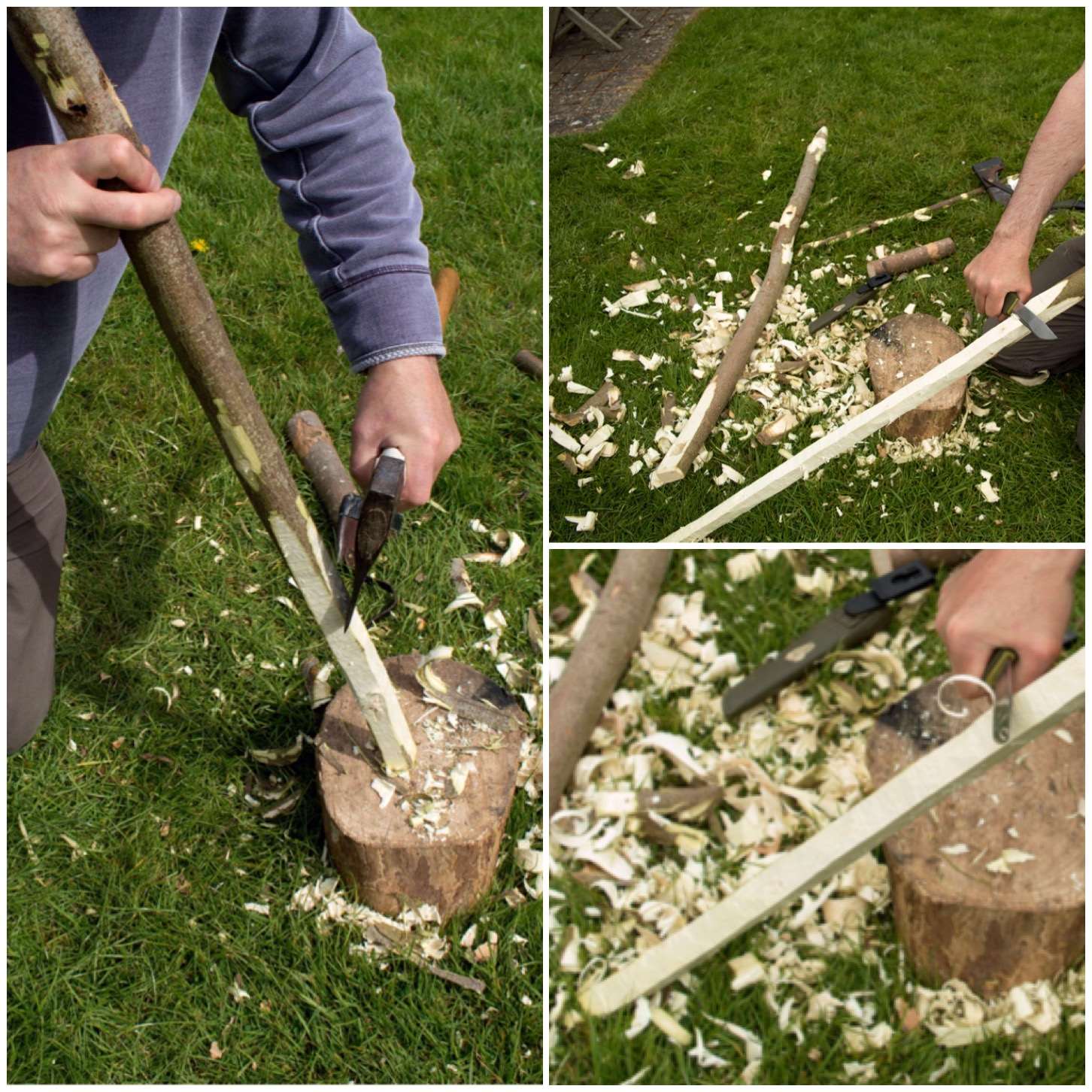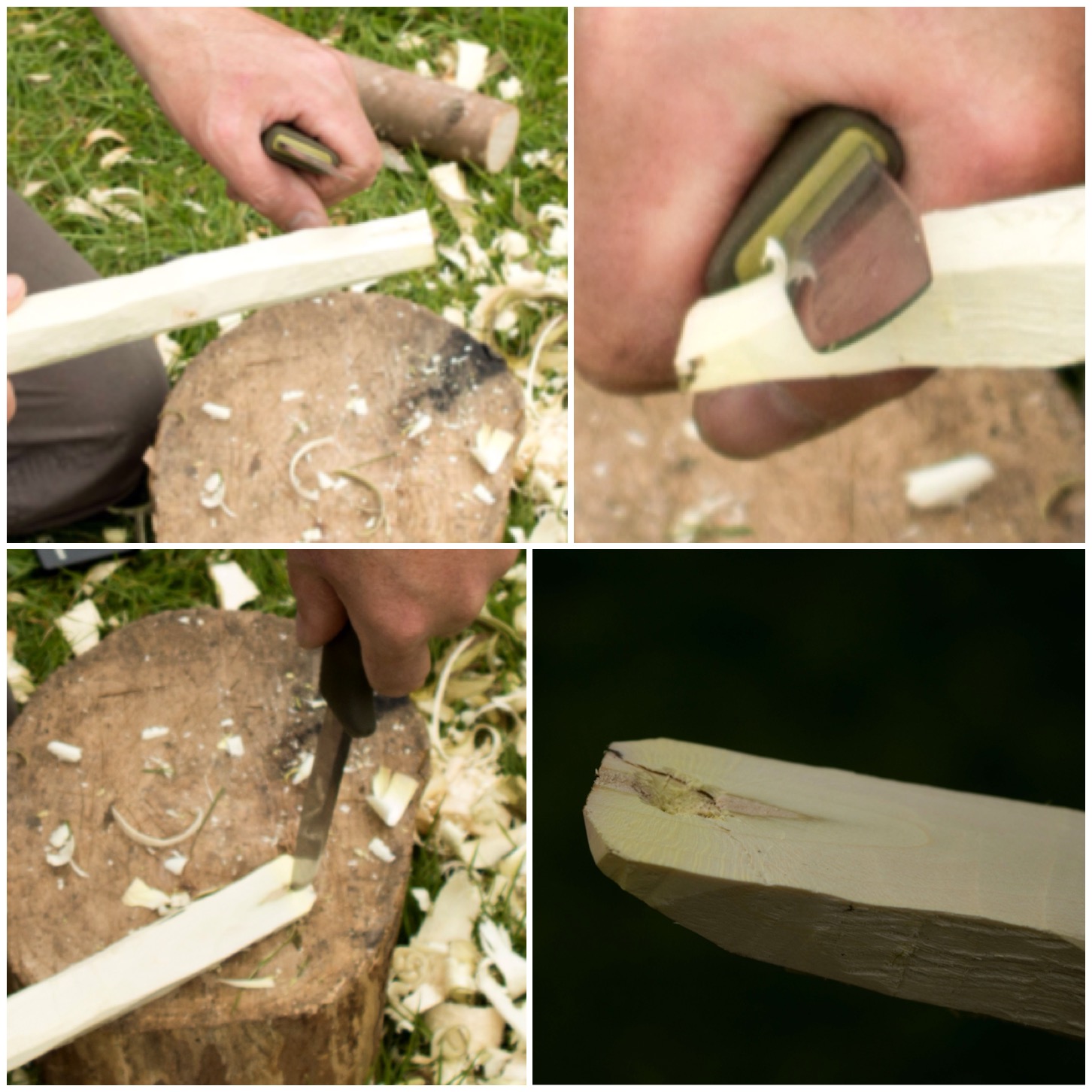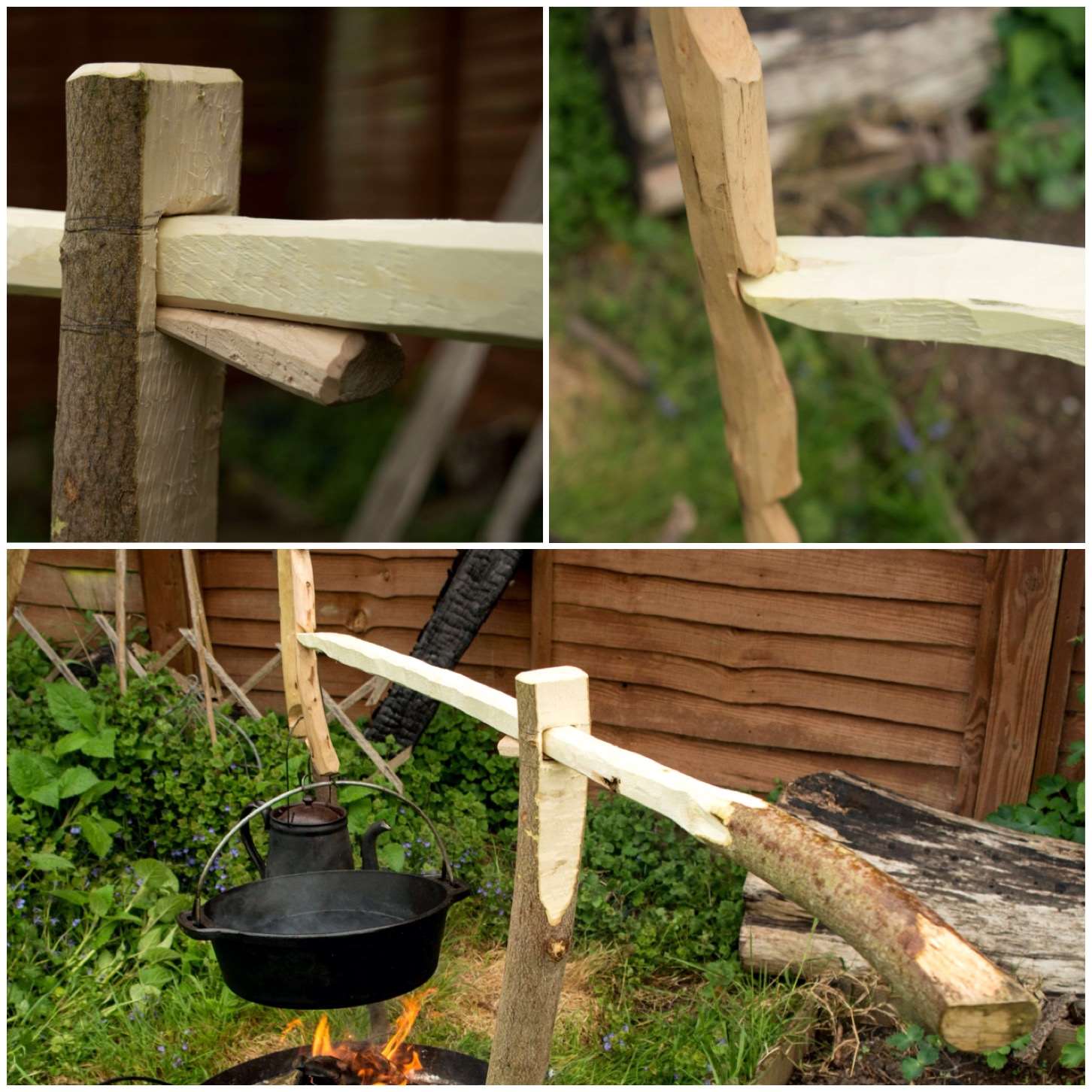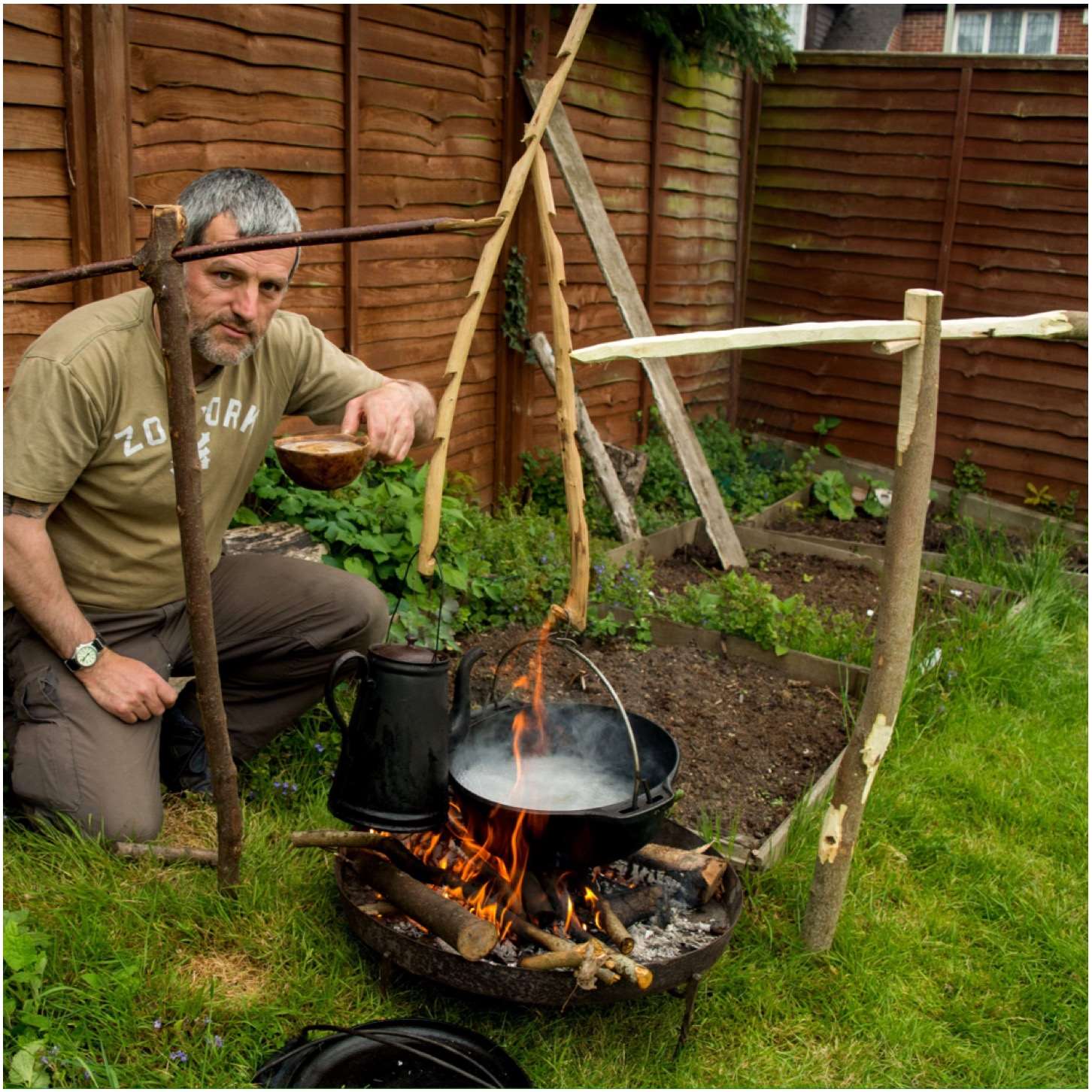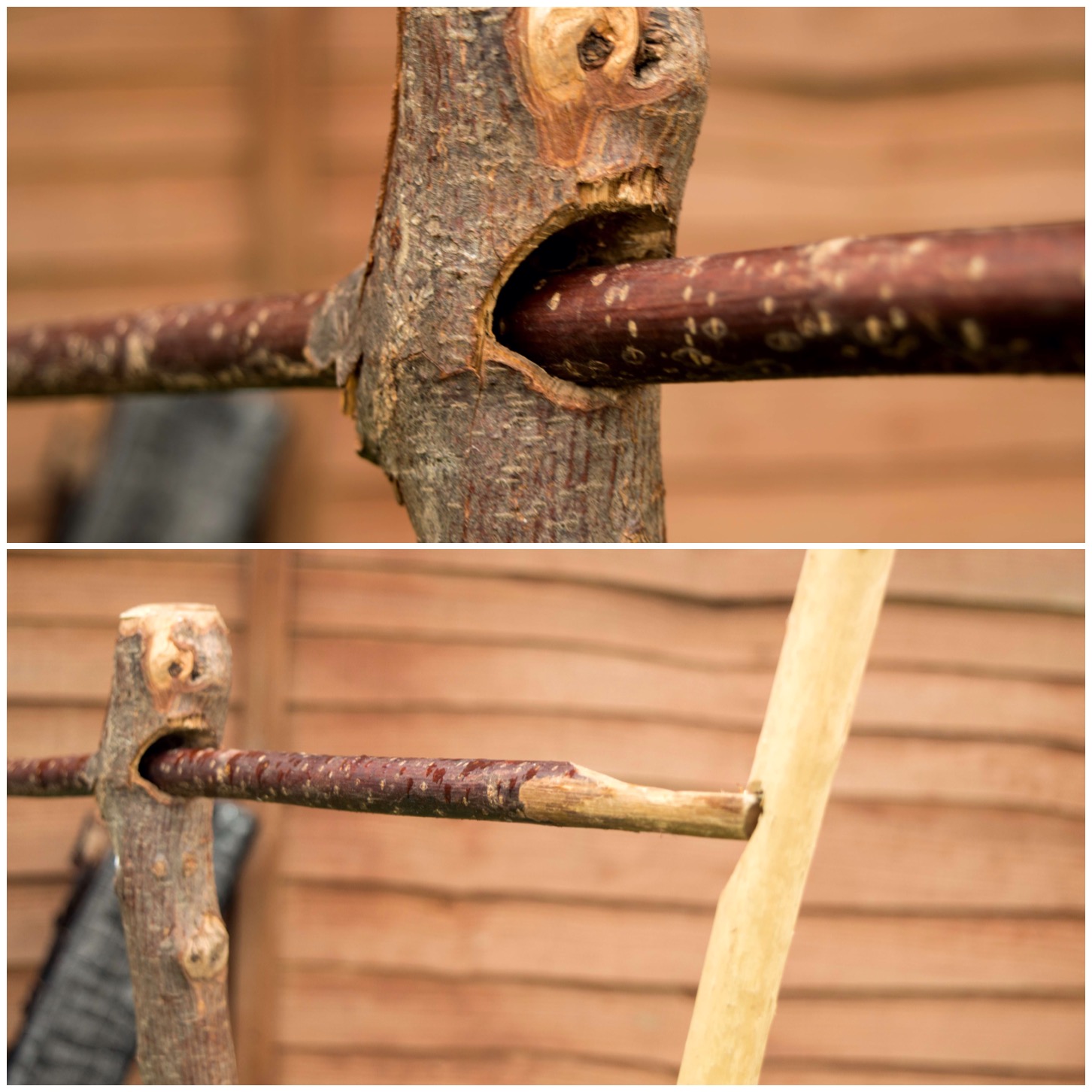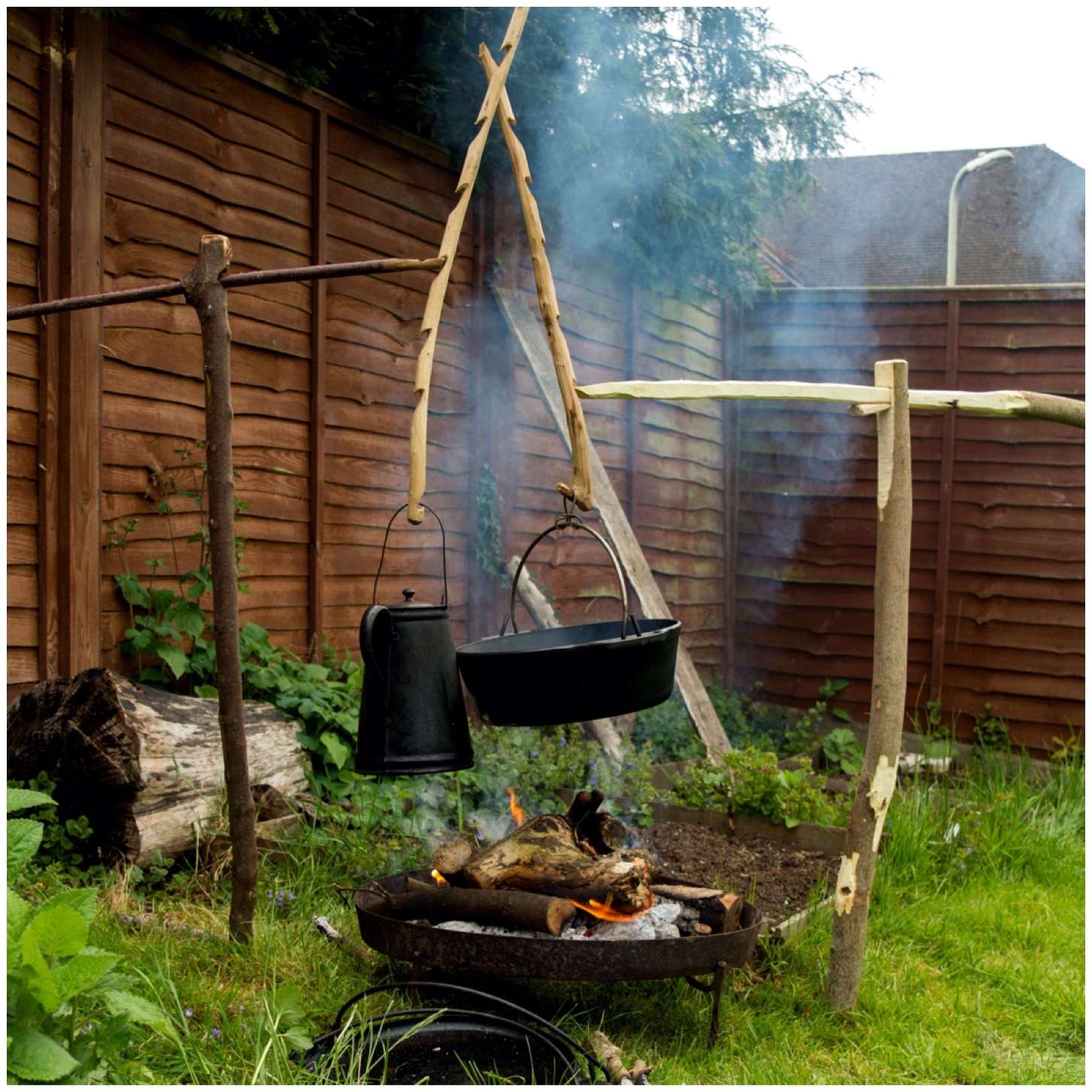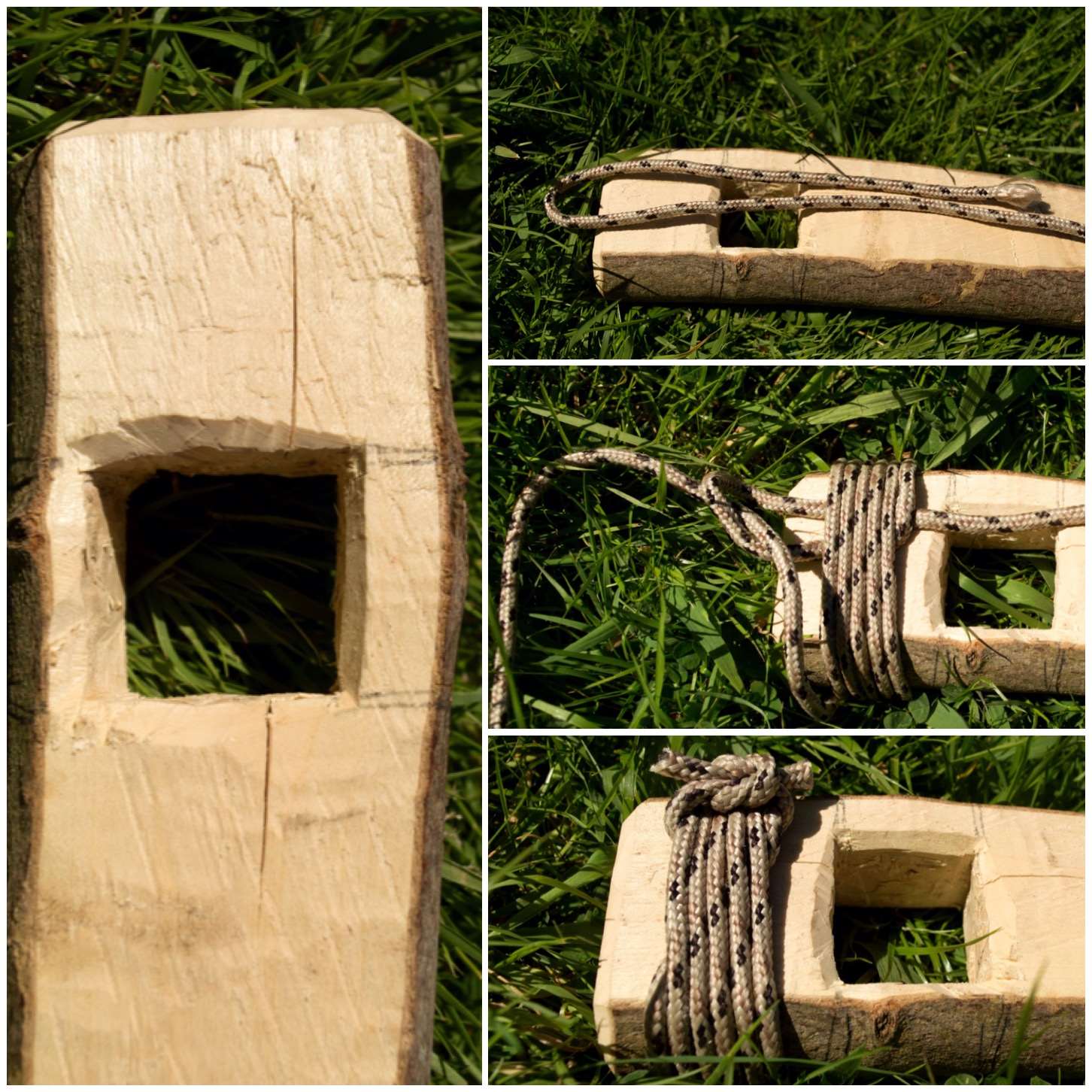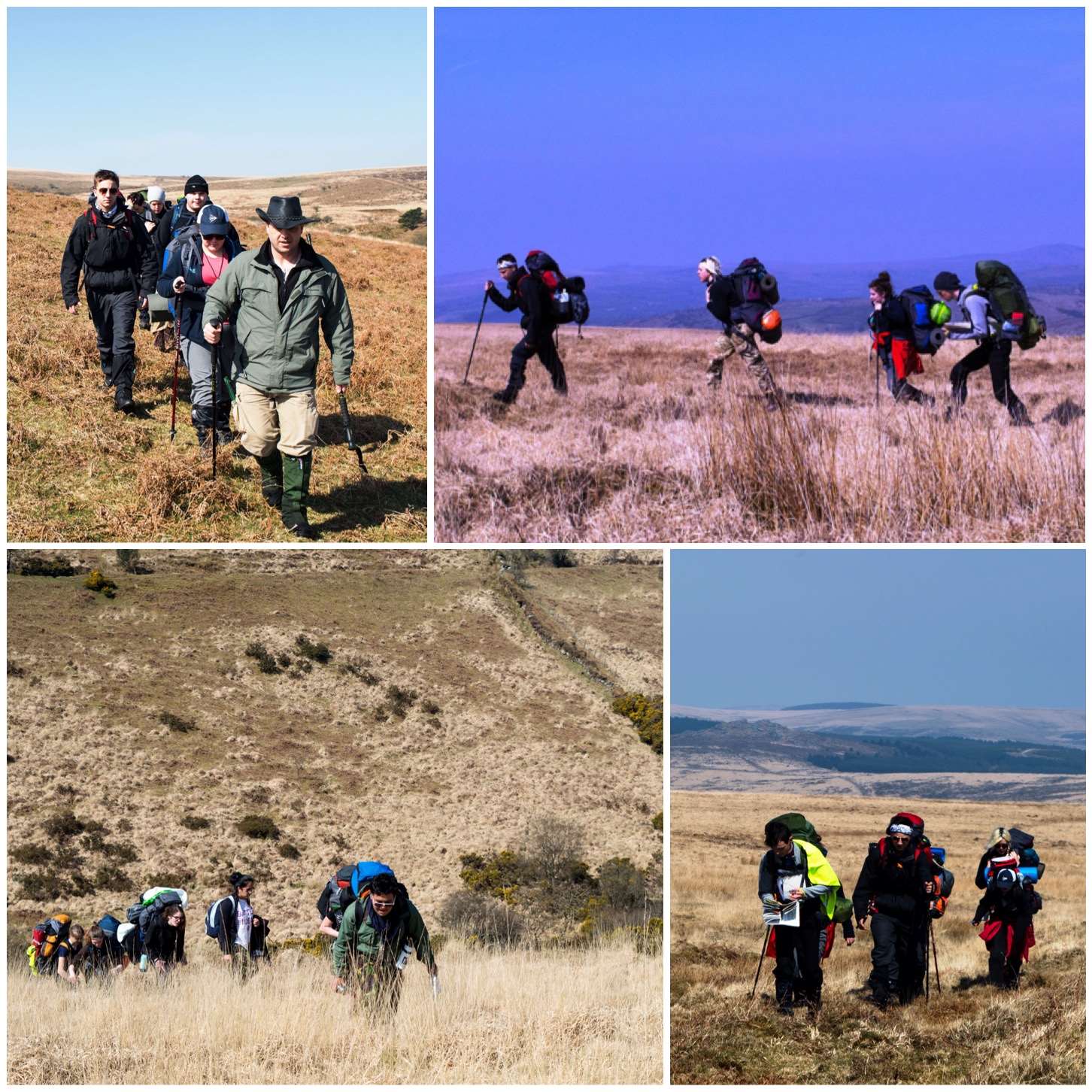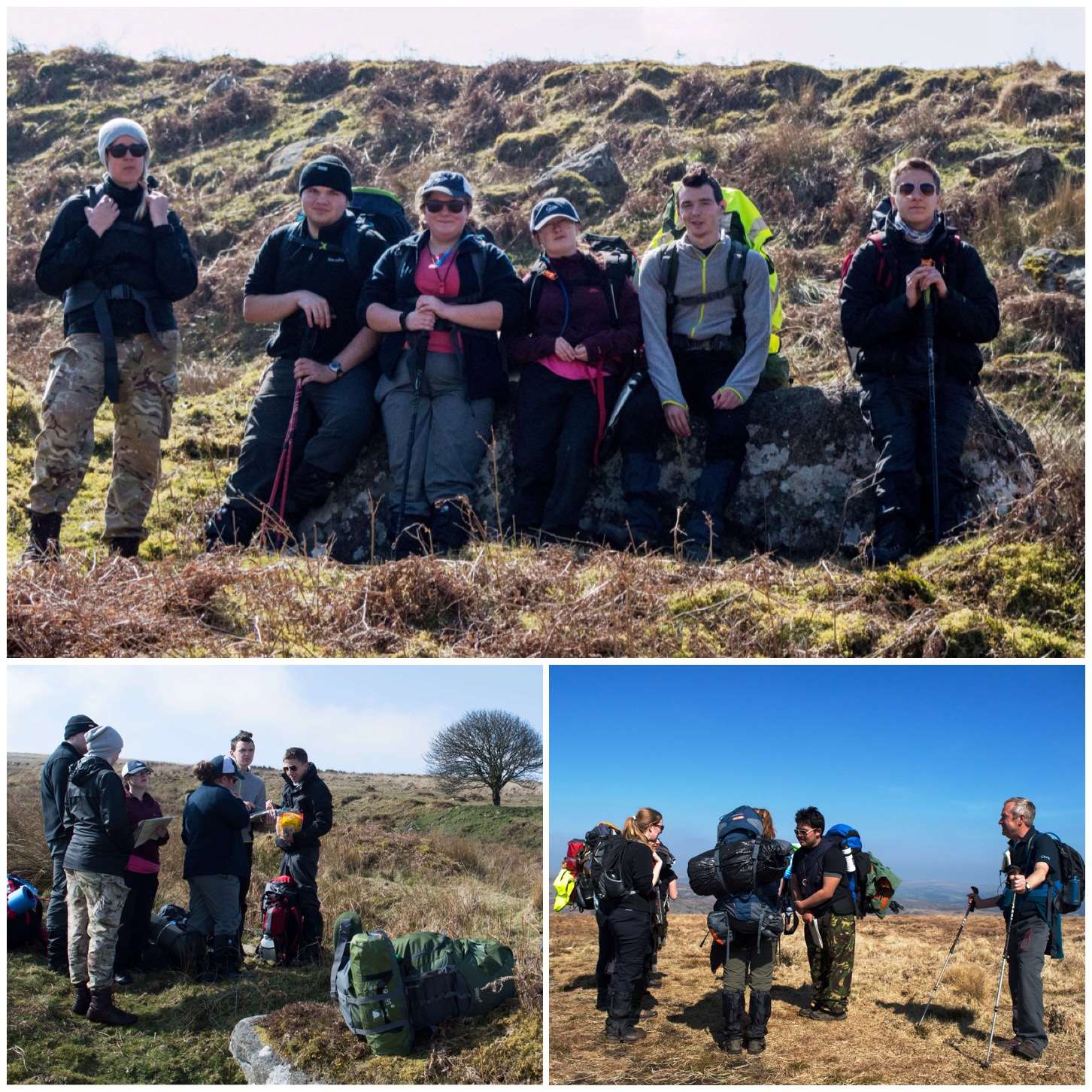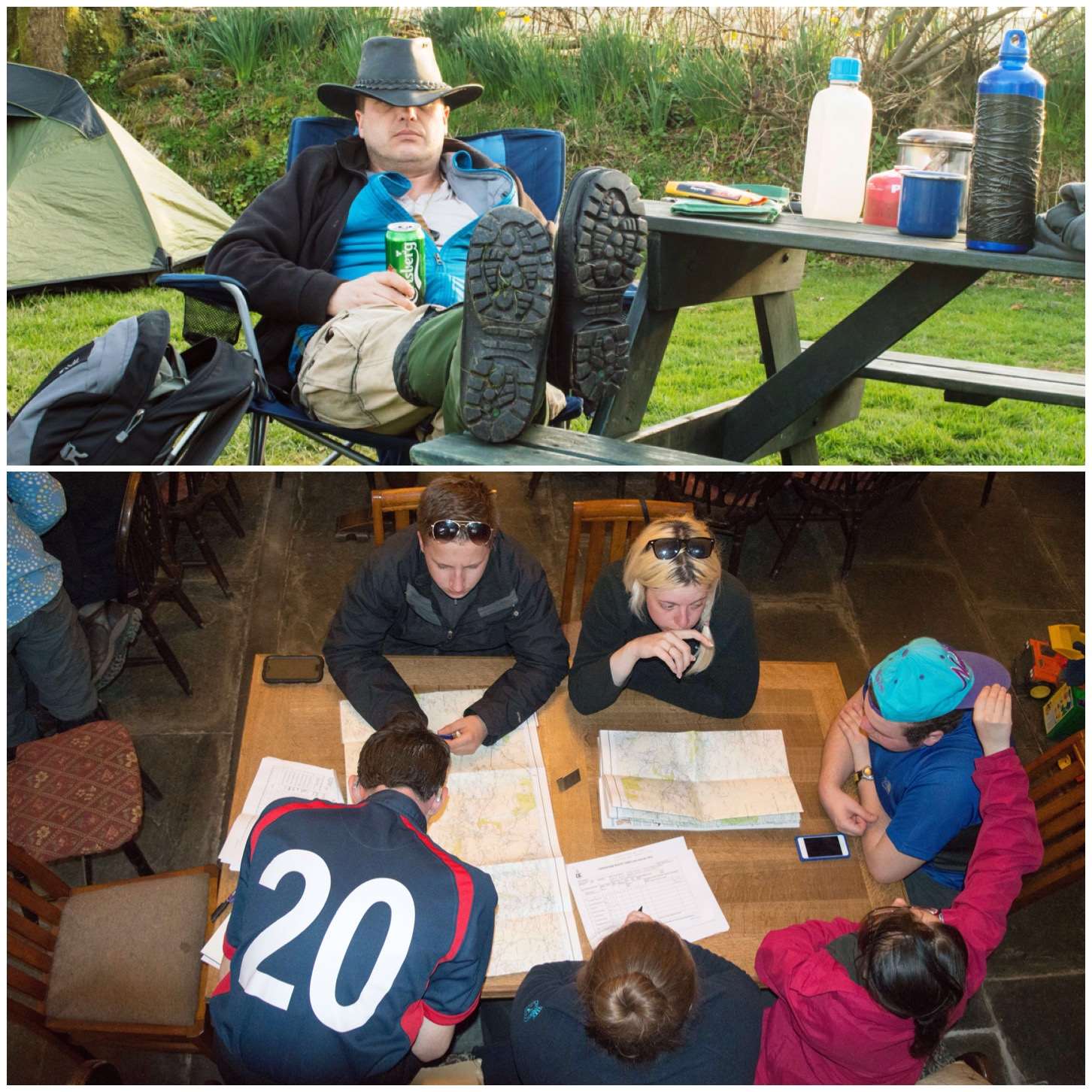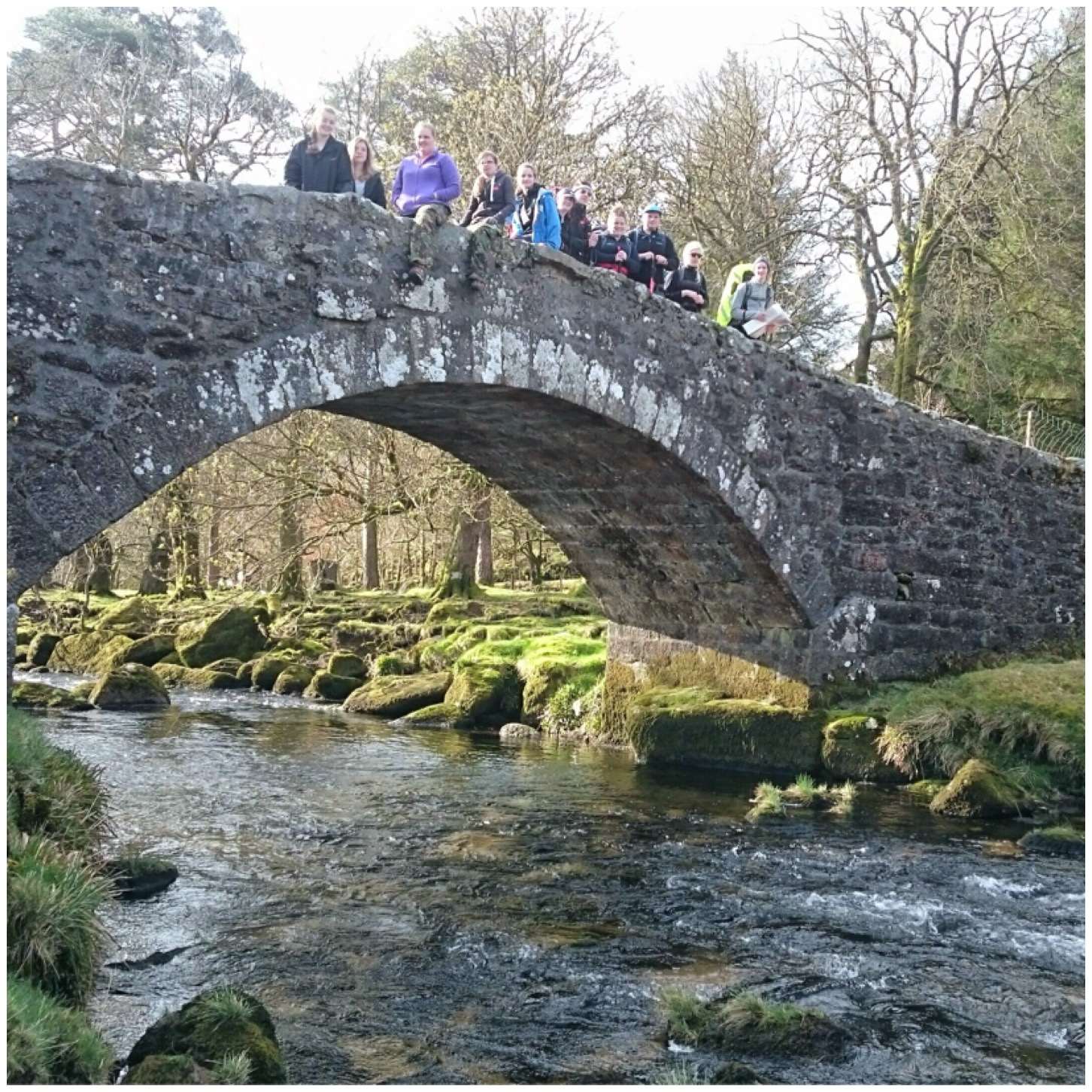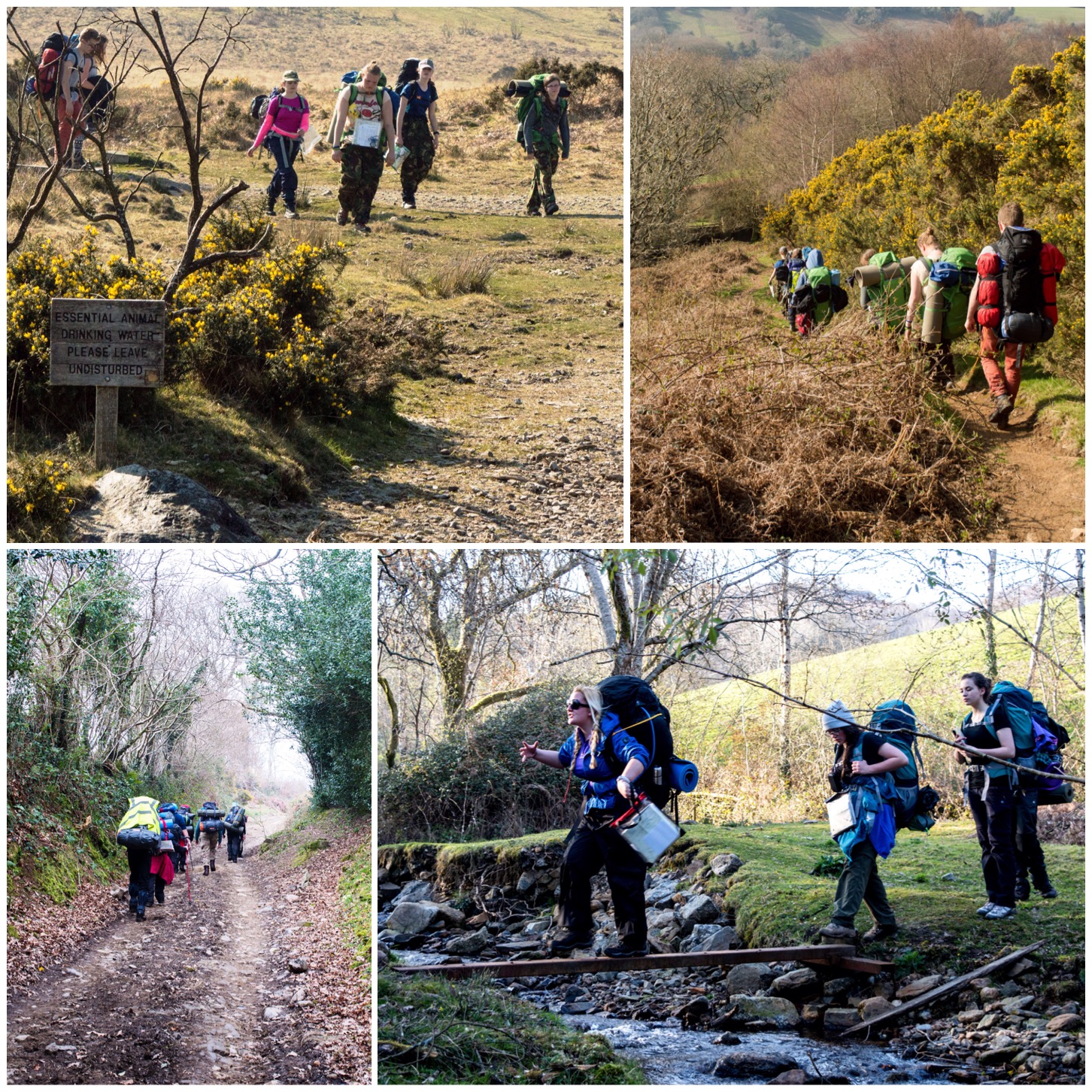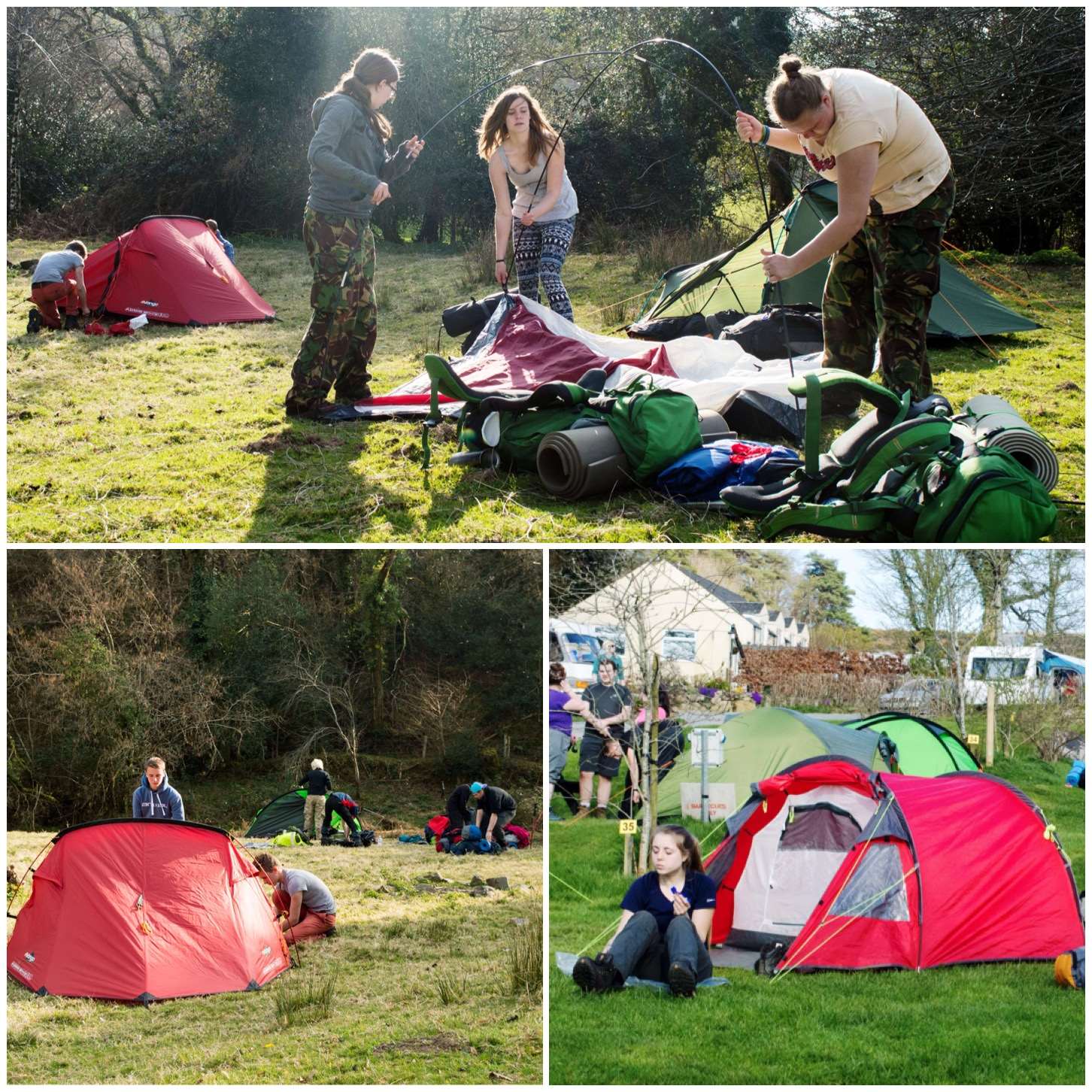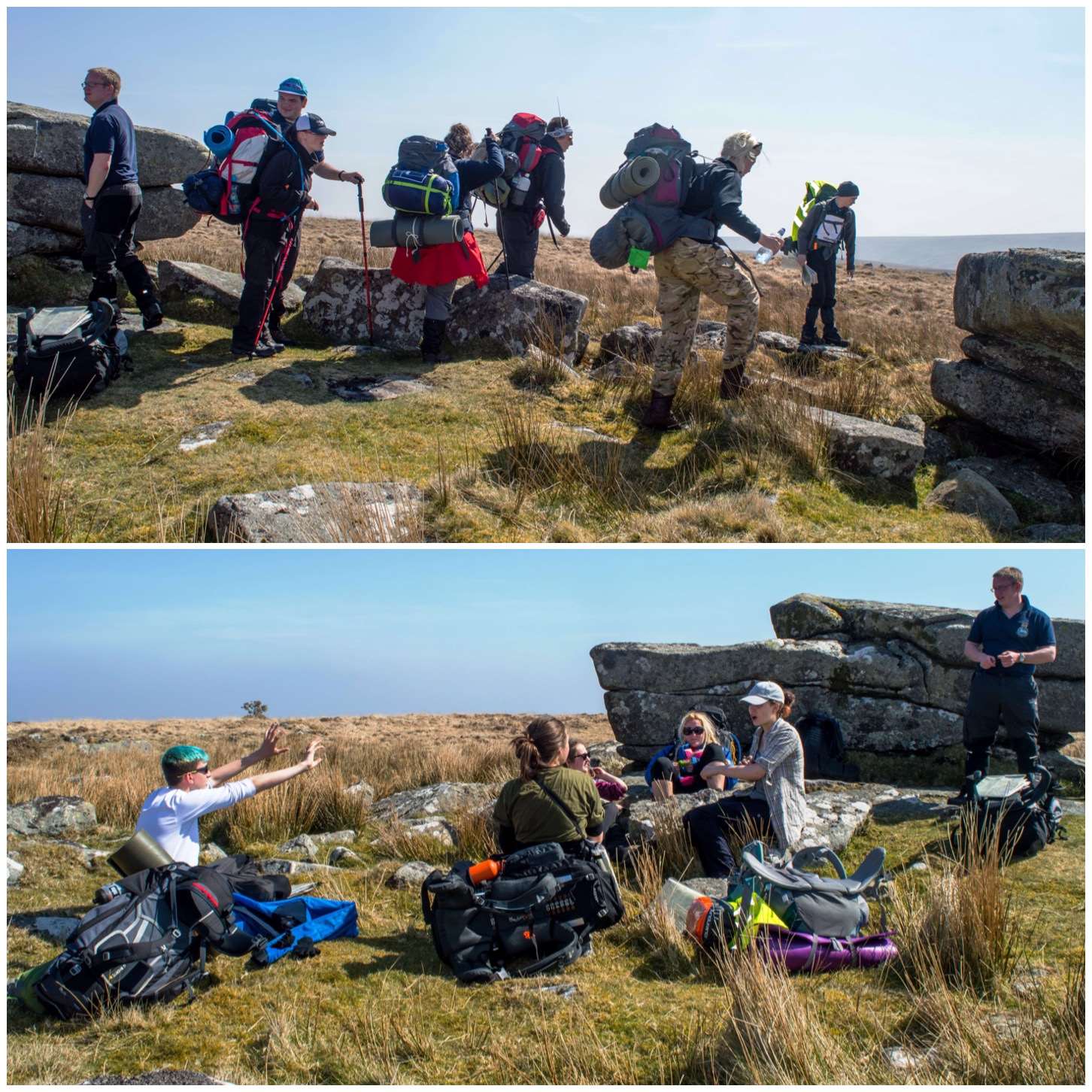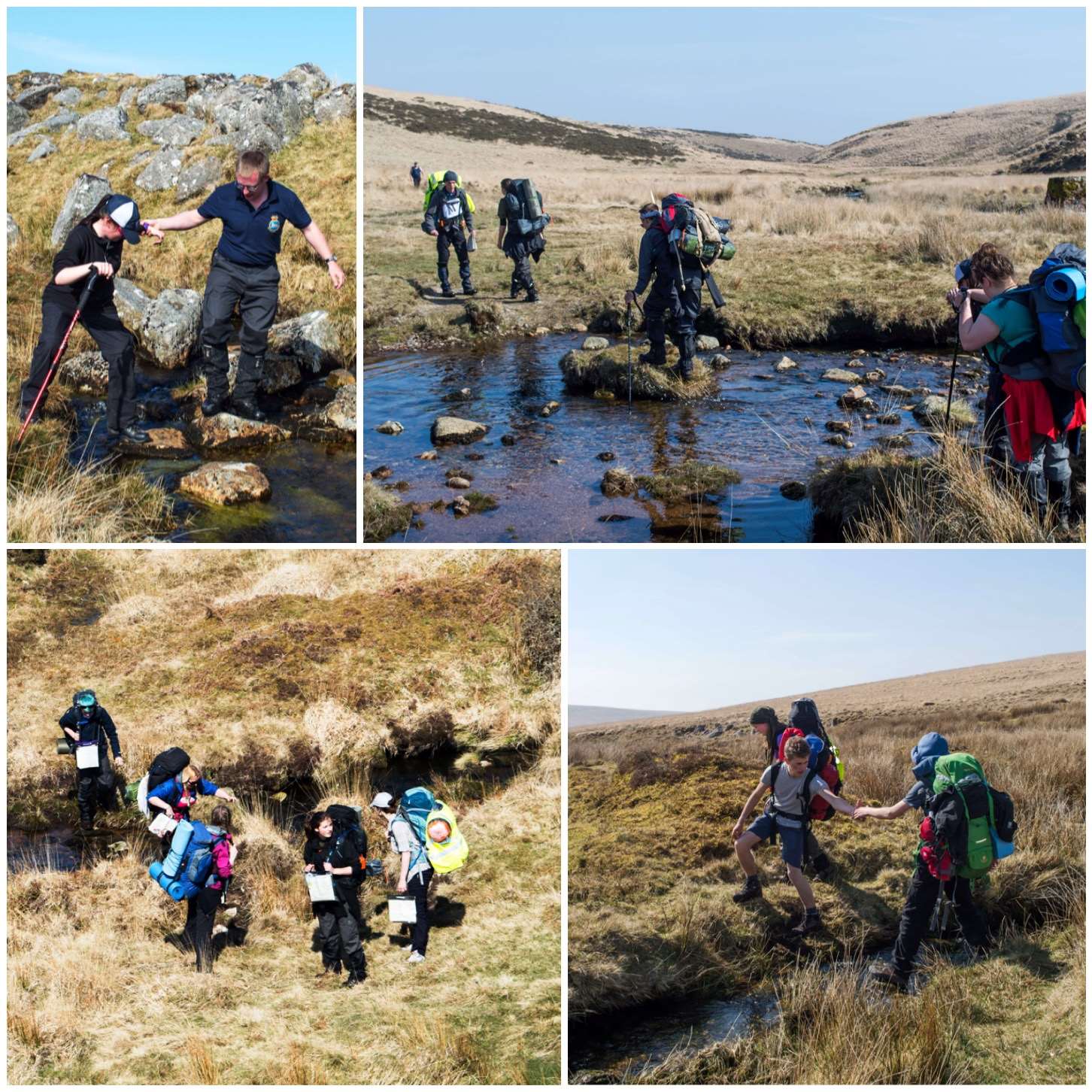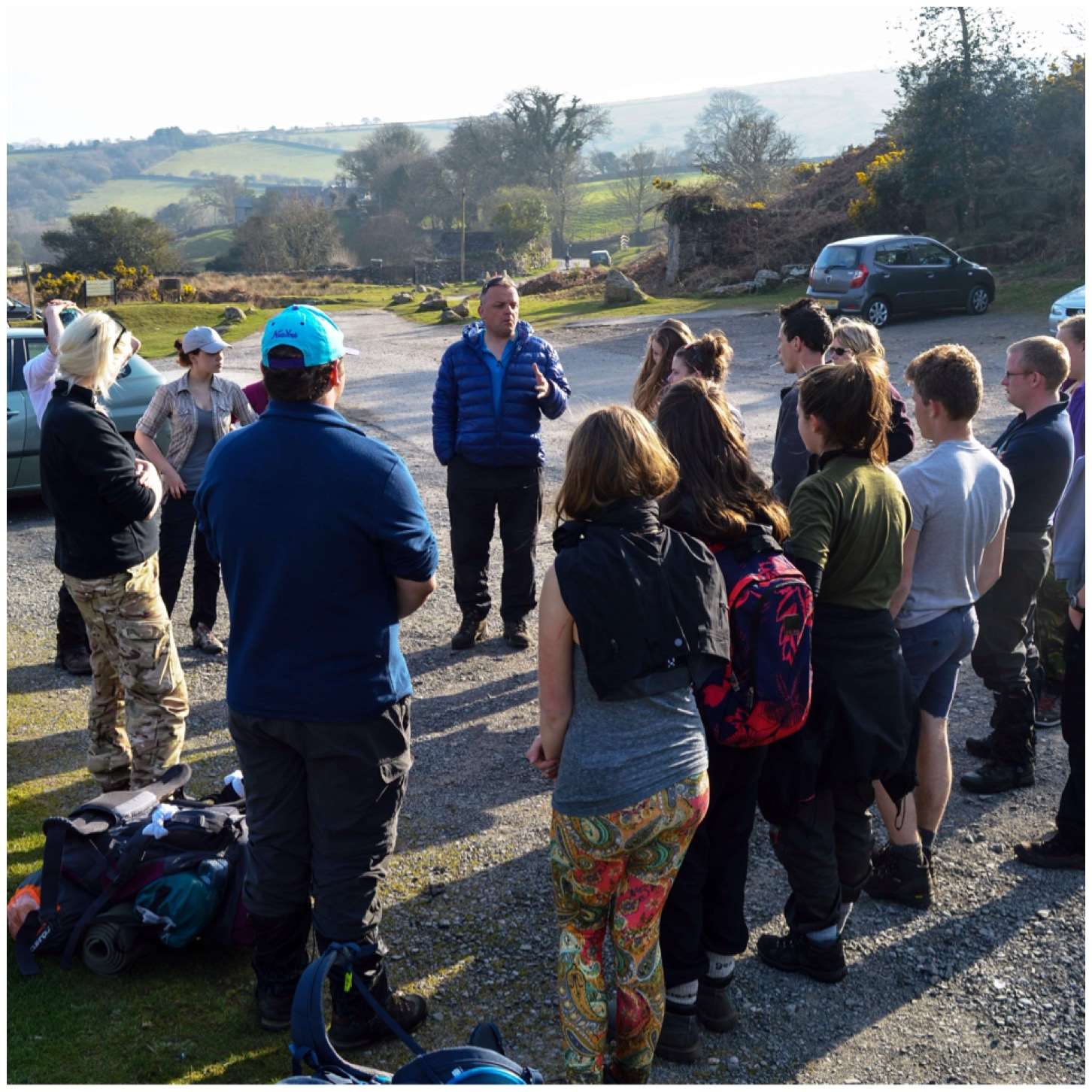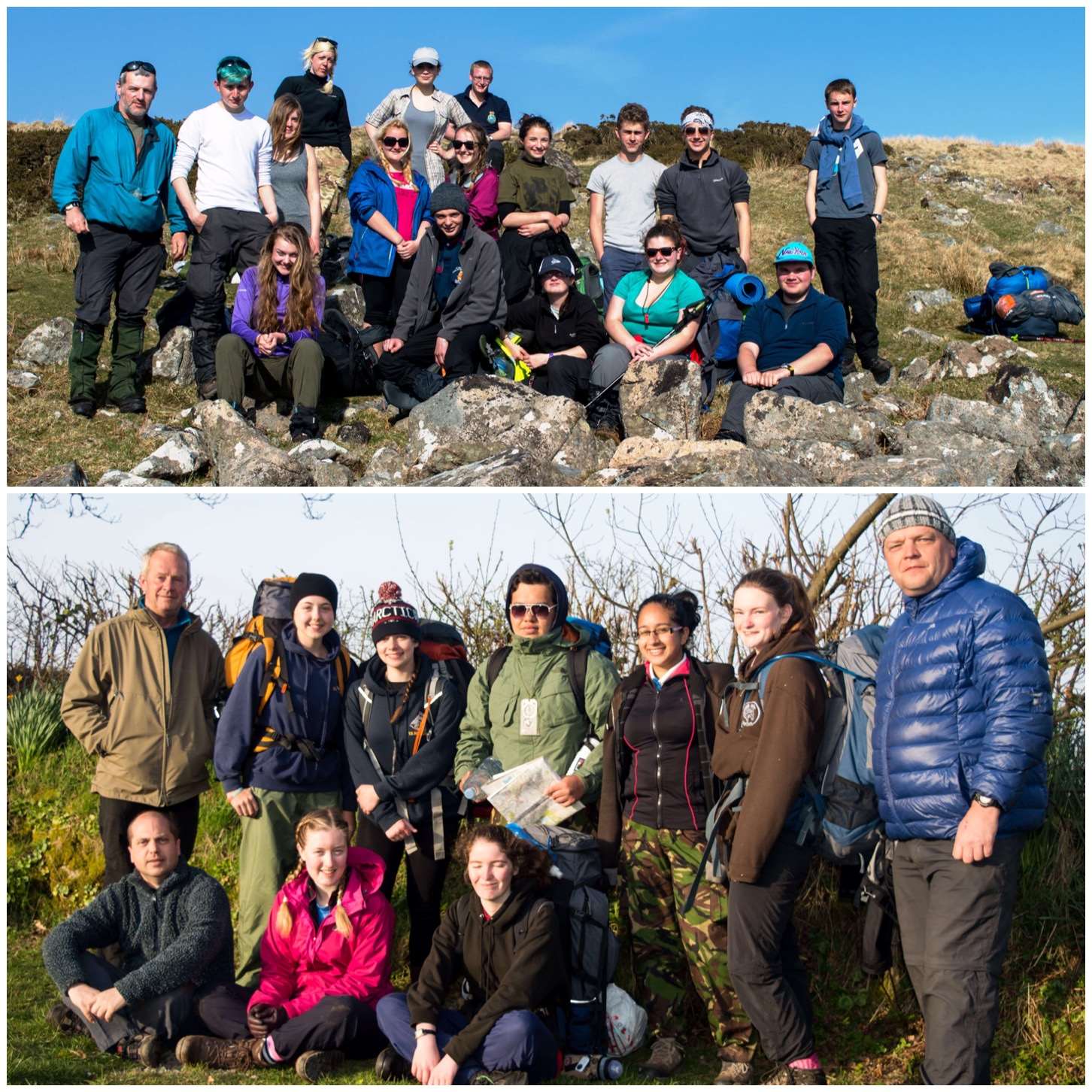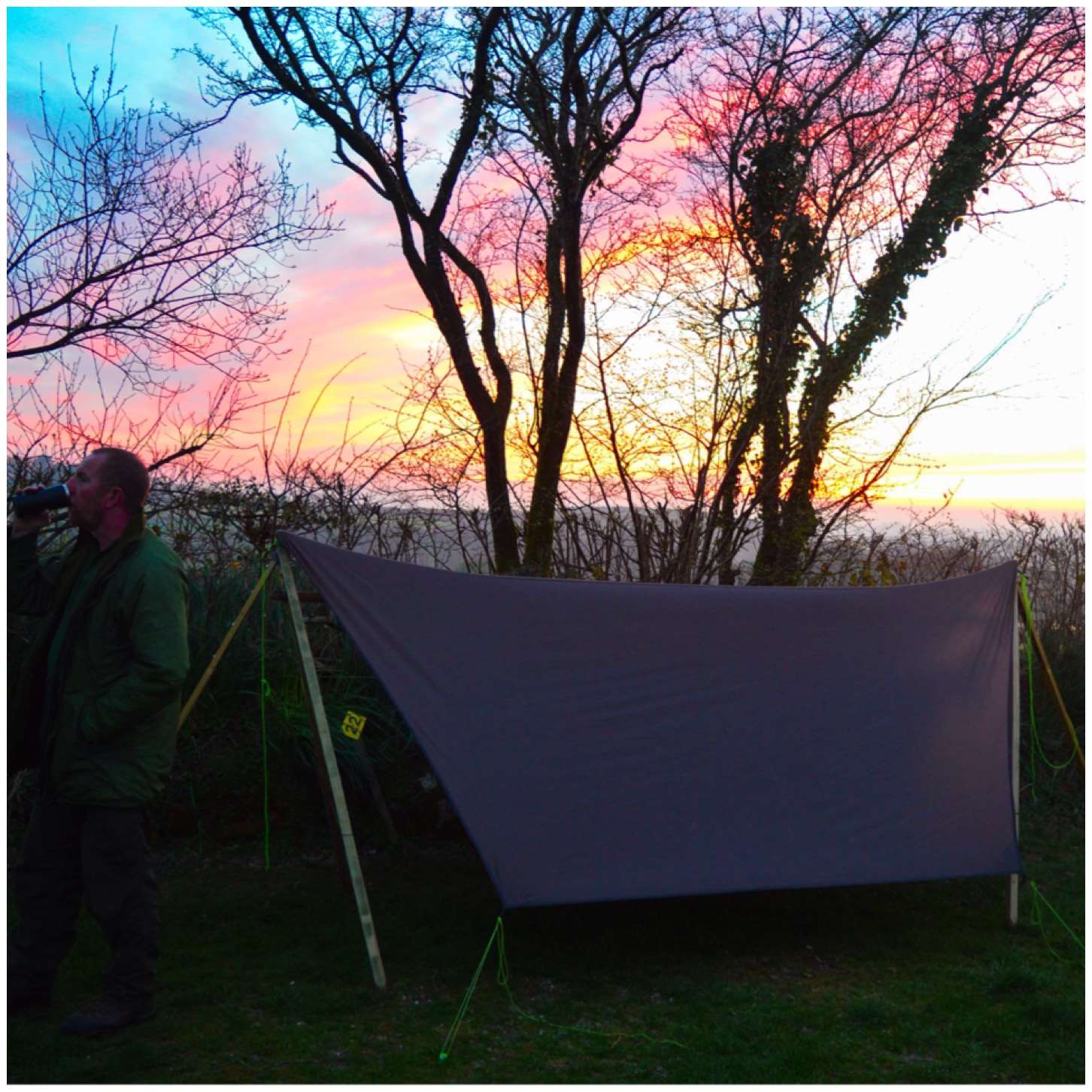one upright – two cranes – three pots
I could never call myself a chef however I could call myself a campfire engineer. I love to make different cooking rigs that I can use around the fire depending on the circumstances I find myself in.
The Aures crane is one of these projects for the more long-term camp and is so easy to make. The crane is named after Victor Aures, a Scout Master from Buffalo, NY. I found a good article on this from an issue of the Boy’s Life from 1915.
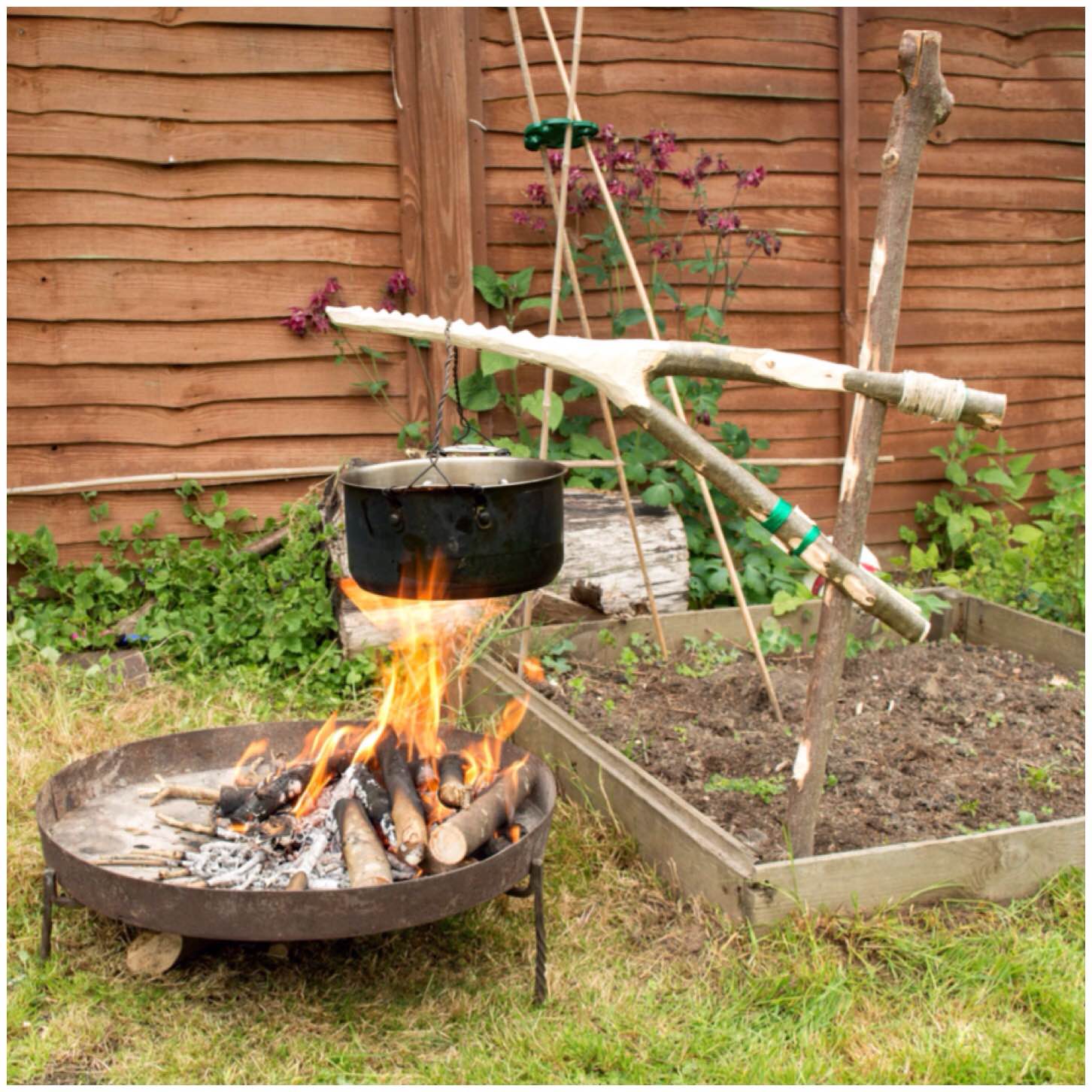
I also found a book called The Book of Camp-Lore by Dan Beard on the Project Gutenberg website that shows the original idea of wrapping the bark of one limb around an upright and a forked lower limb.
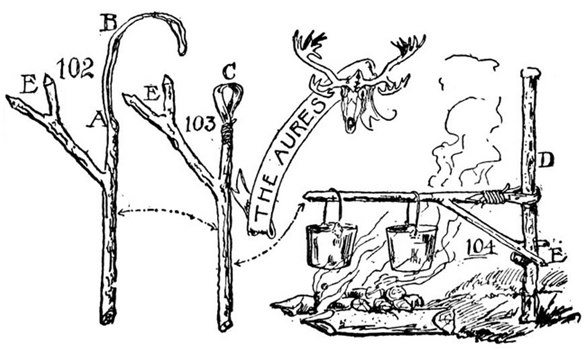
I have been making these cranes for many years now but it was only once I started researching them that I discovered its correct name. This post does not cover the making of the Aures crane as shown in the Boy’s Life magazine or on in the Book of Camp-Lore (I will do that one later) but a variation of it.
The picture below shows a classic Aures crane with a good secondary fork to rest against the upright. It’s not easy to find the exact combination of forks needed for this classic style so I set out to re-create the Aures crane using a branch with only one fork, as these are so much more common.
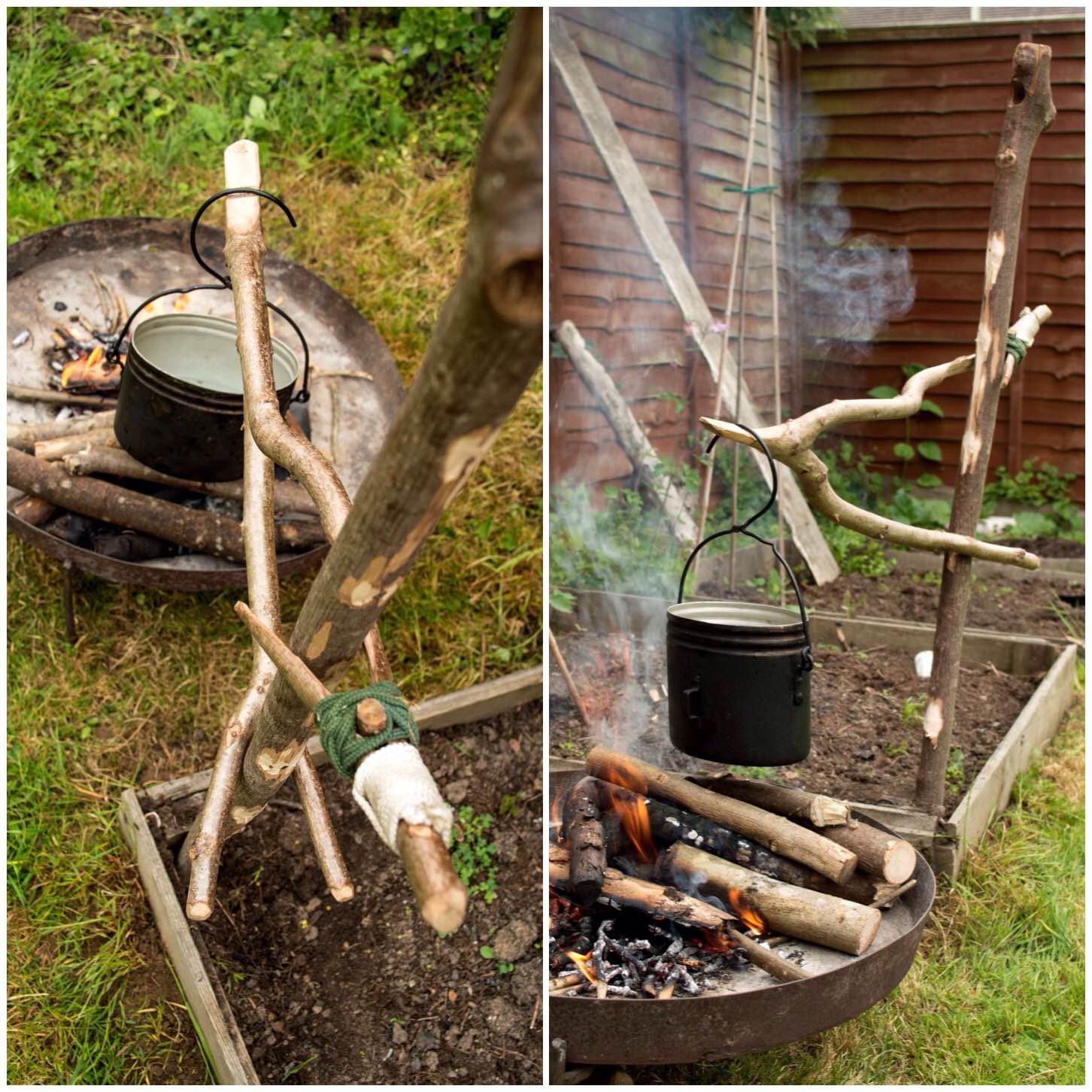
I chose a sturdy green piece of hazel wood with a single fork. After trimming the ends to the size I wanted I used my axe to get rid of all the lumps and bumps on the wood.
In the bottom right picture the limb on the left I will be calling the upper limb and the one on the right the lower limb.
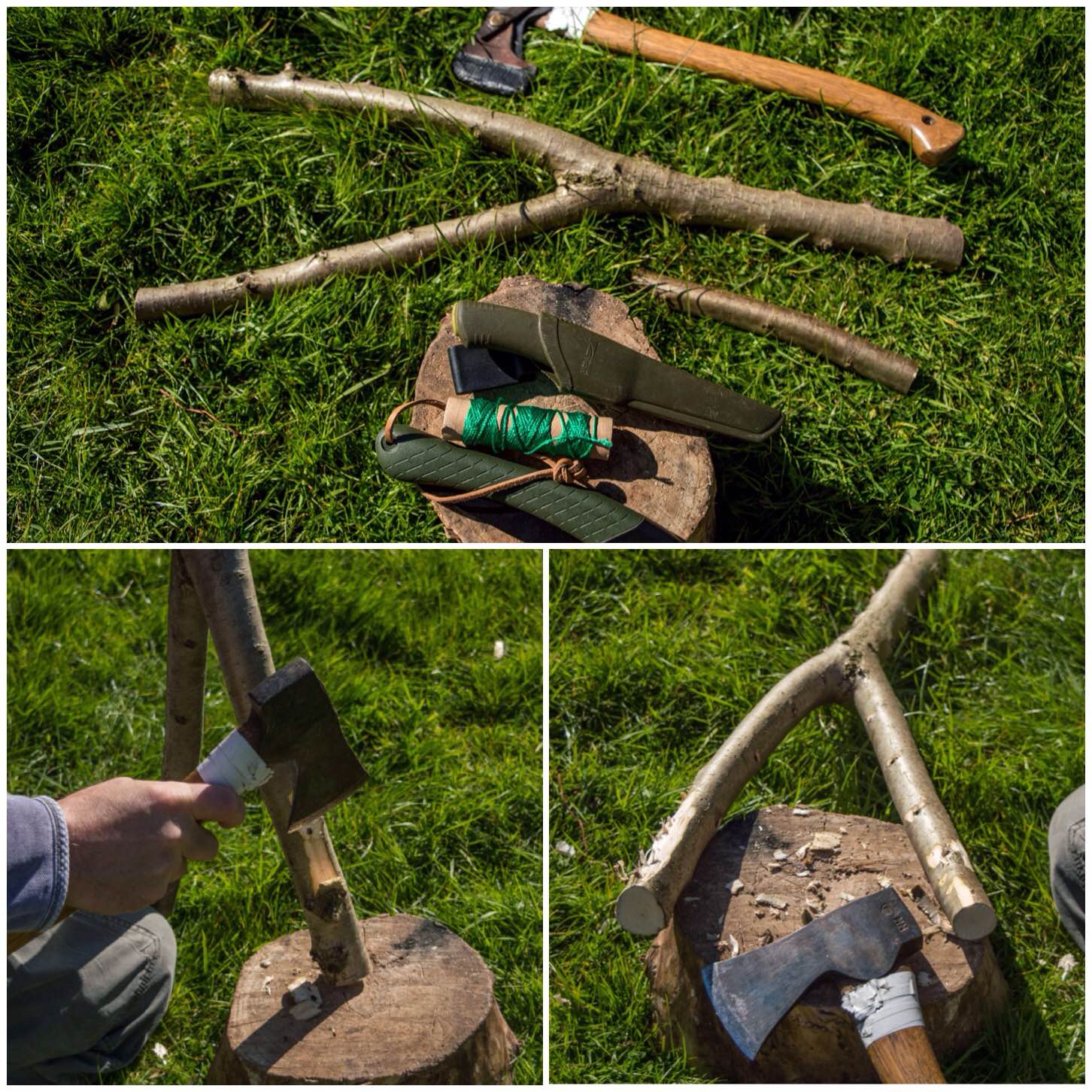
Top Limb
Next I whipped some strong non-stretchy string onto the top limb of the crane. Grogs knots have a good tutorial on this, however it’s not necessary to whip in any particular way- just do it in whatever way works for you and binds that end of the limb tightly.
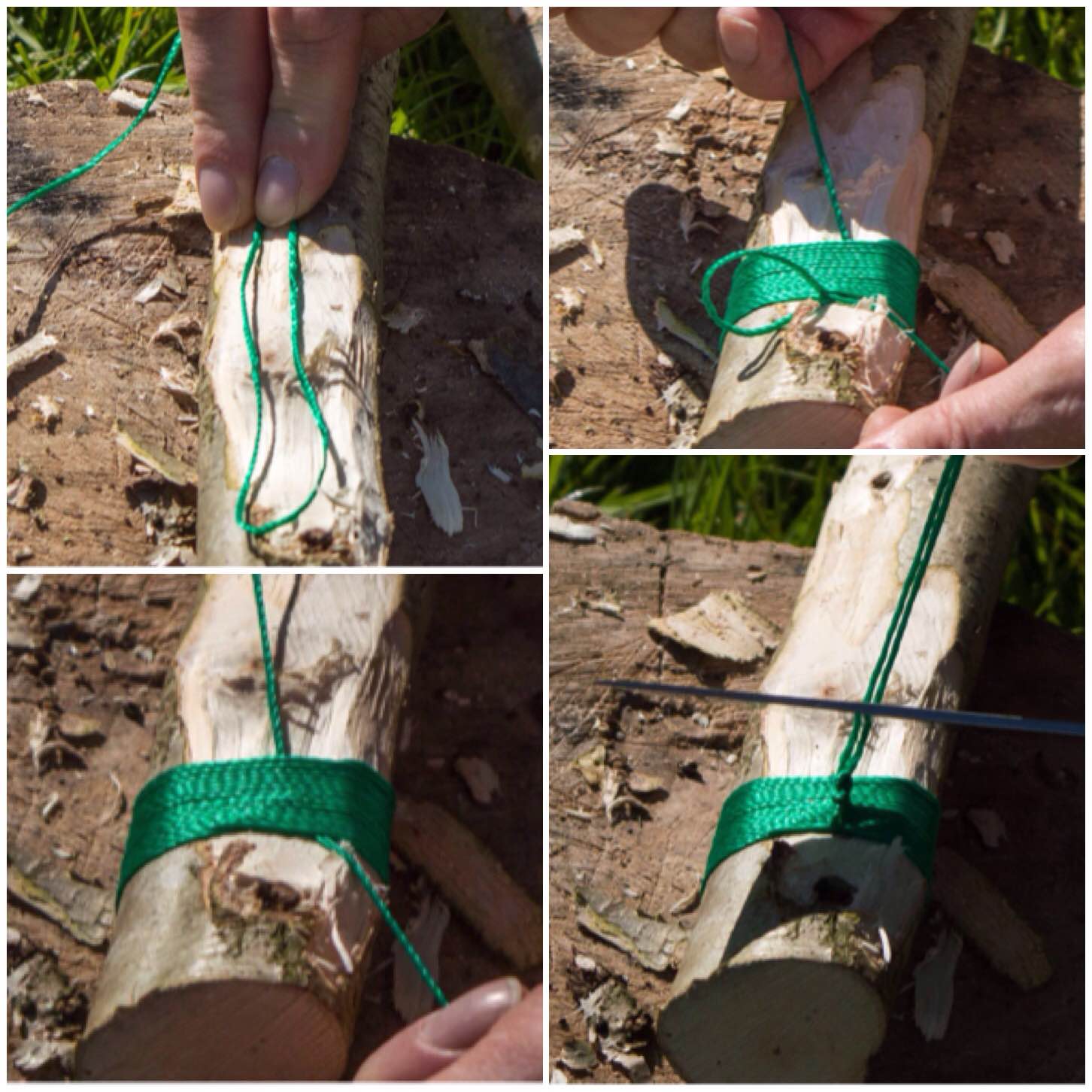
One of the reasons I selected a fairly sturdy fork was that I needed to put in a stop cut about a third of the way down the top limb. This stop cut will help you greatly in controlling the split you need to make to form the hook.
I sawed my stop cut to about two thirds of the diameter of the limb.
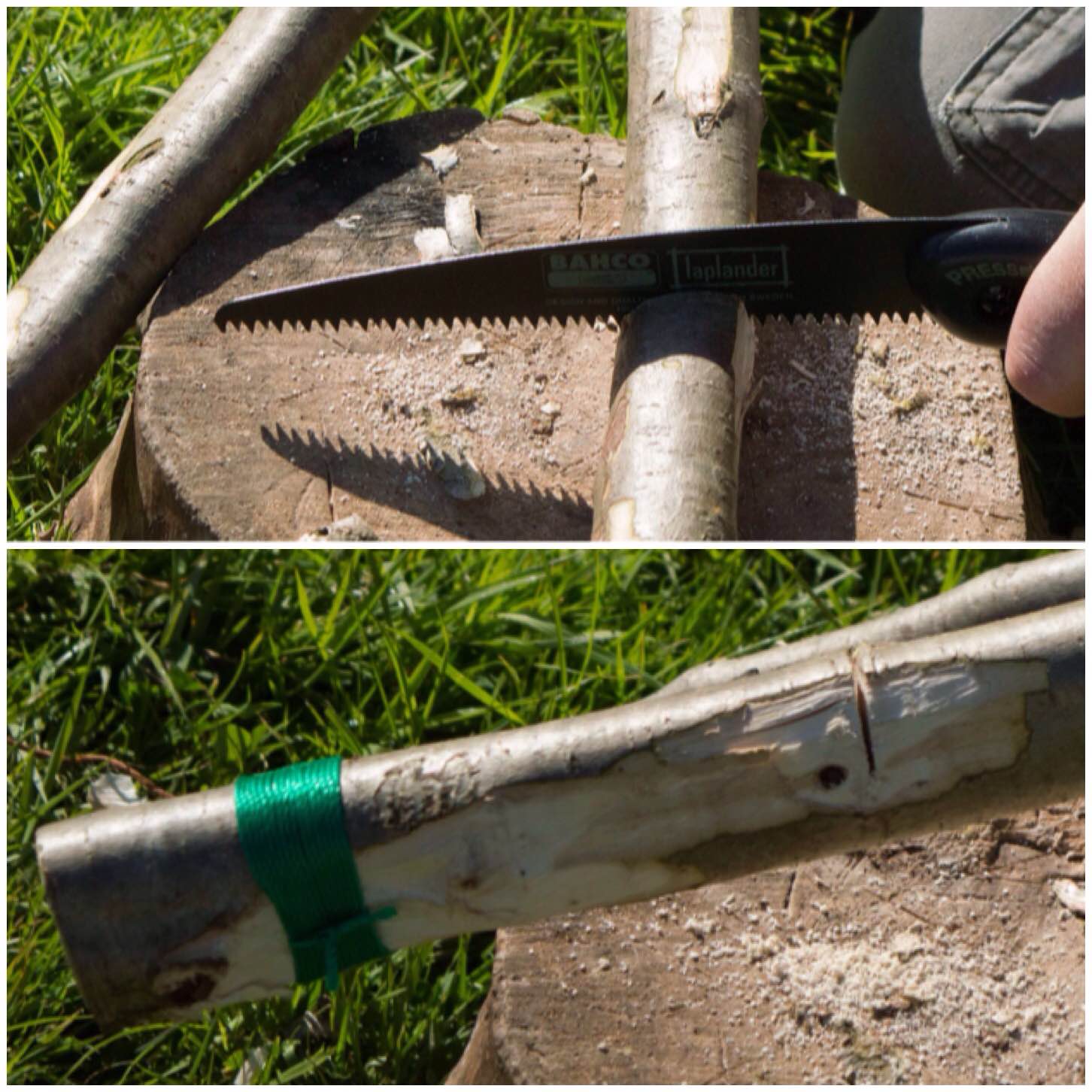
Using small cuts I then cut out a groove just above the stop cut towards the fork to the depth of the stop cut (the two bottom left pictures). This allowed me enough space to get my knife blade in to start battoning down to split the wood.
I was very careful when battoning not to let the blade touch the string that I had whipped onto the limb. Take care to wiggle the knife to remove it, keeping your non-knife hand well clear. I battoned a number of splits so as to easily carve them out.
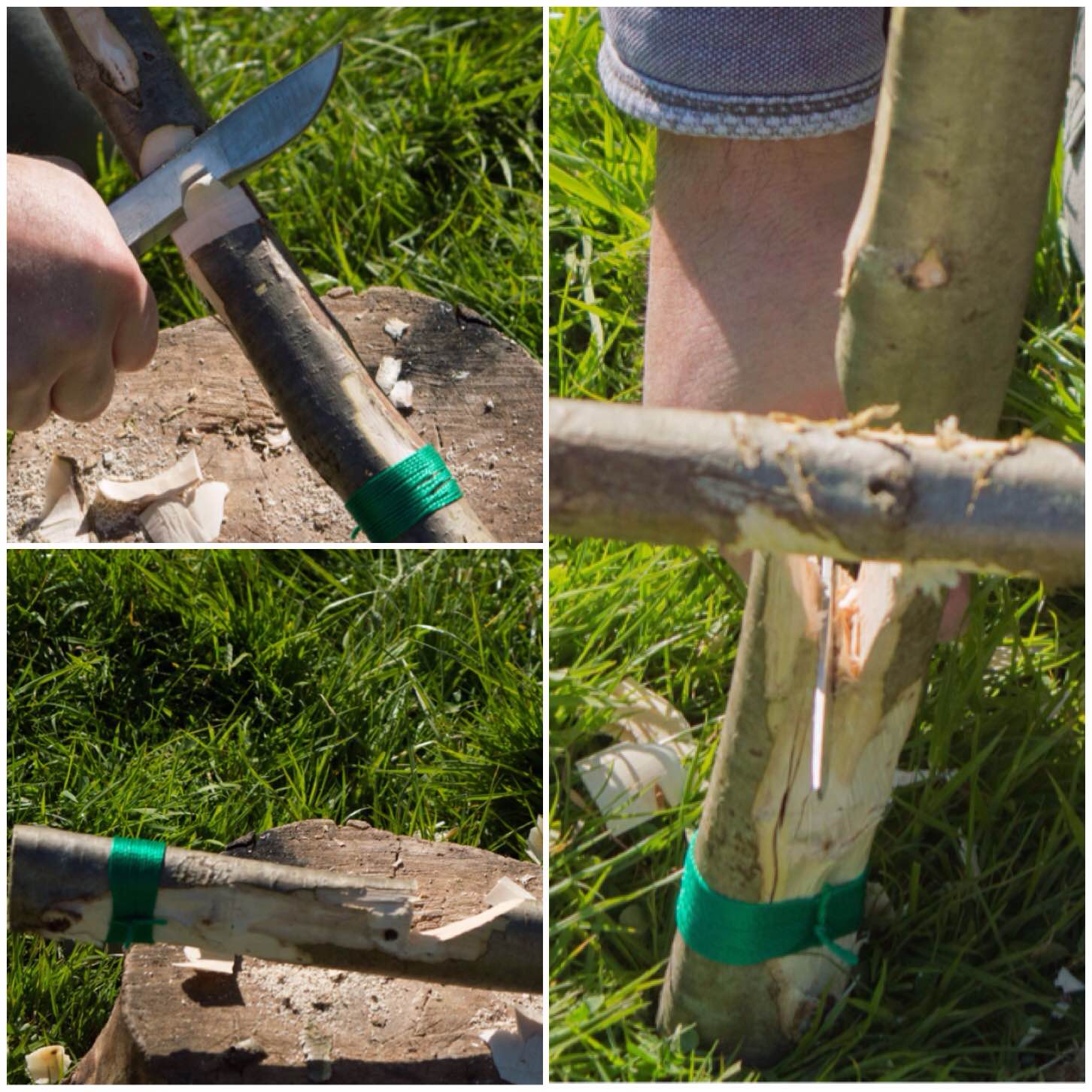
I also found that sawing down into the split helped with removing the wood. Once I had sawn or battoned down a number of times I carved out the excess wood by pressing down with my knife at a slight angle (you can just see the carved out area in the bottom left picture).
Next I took a small stick and carved it into a wedge shape to batton into the fork to expand it further.
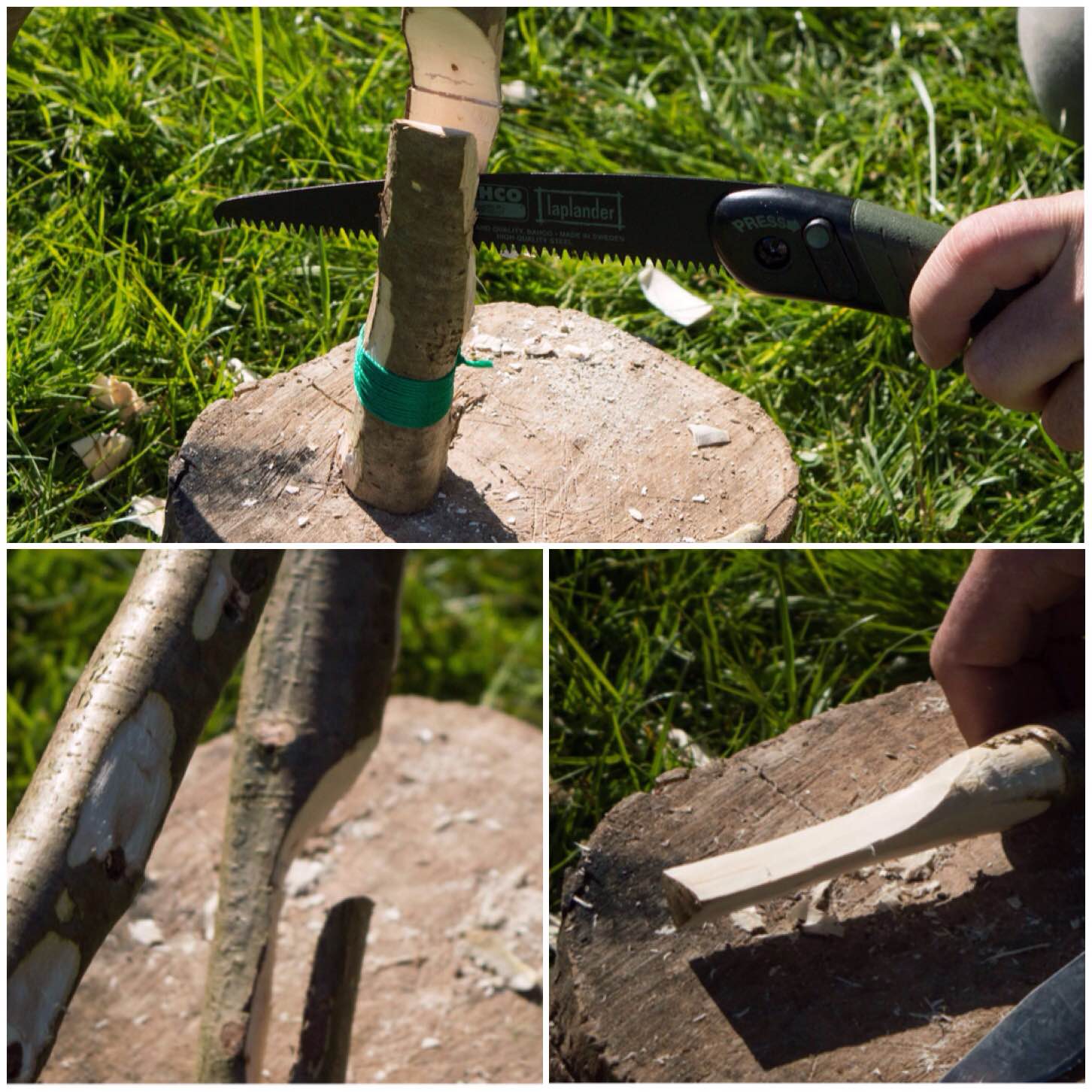
Double check that your whipping is secure and batton the wedge into the fork to expand it. Once it is securely fixed, trim the wedge so it fits neatly.
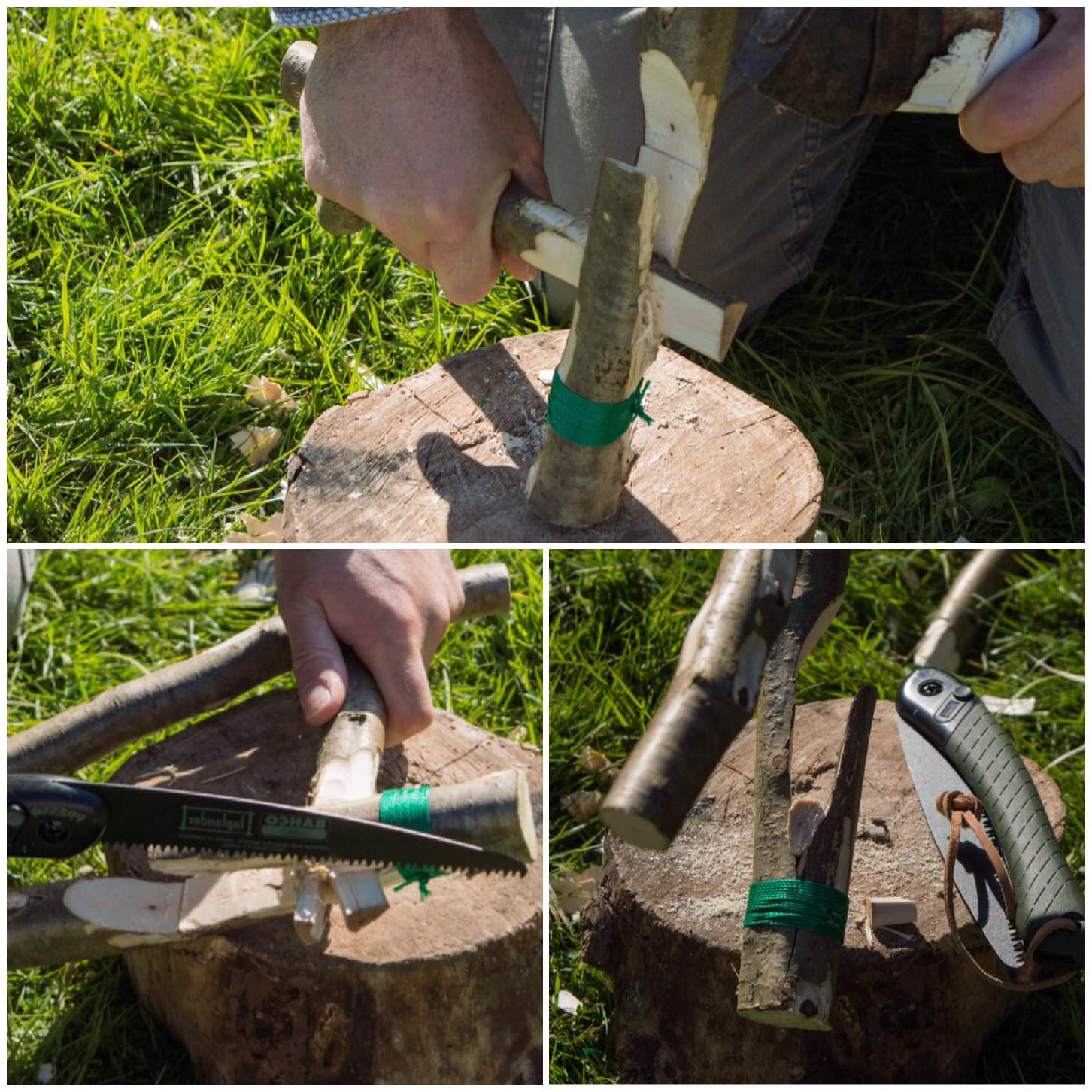
I used my knife to carve some more wood from the inner part of the fork to expand it a bit more. At this stage I was trying the fork out on the upright pole to see how it fitted. Don’t take off too much wood as you need to maintain strength in the fork so it will hold a heavy pot.
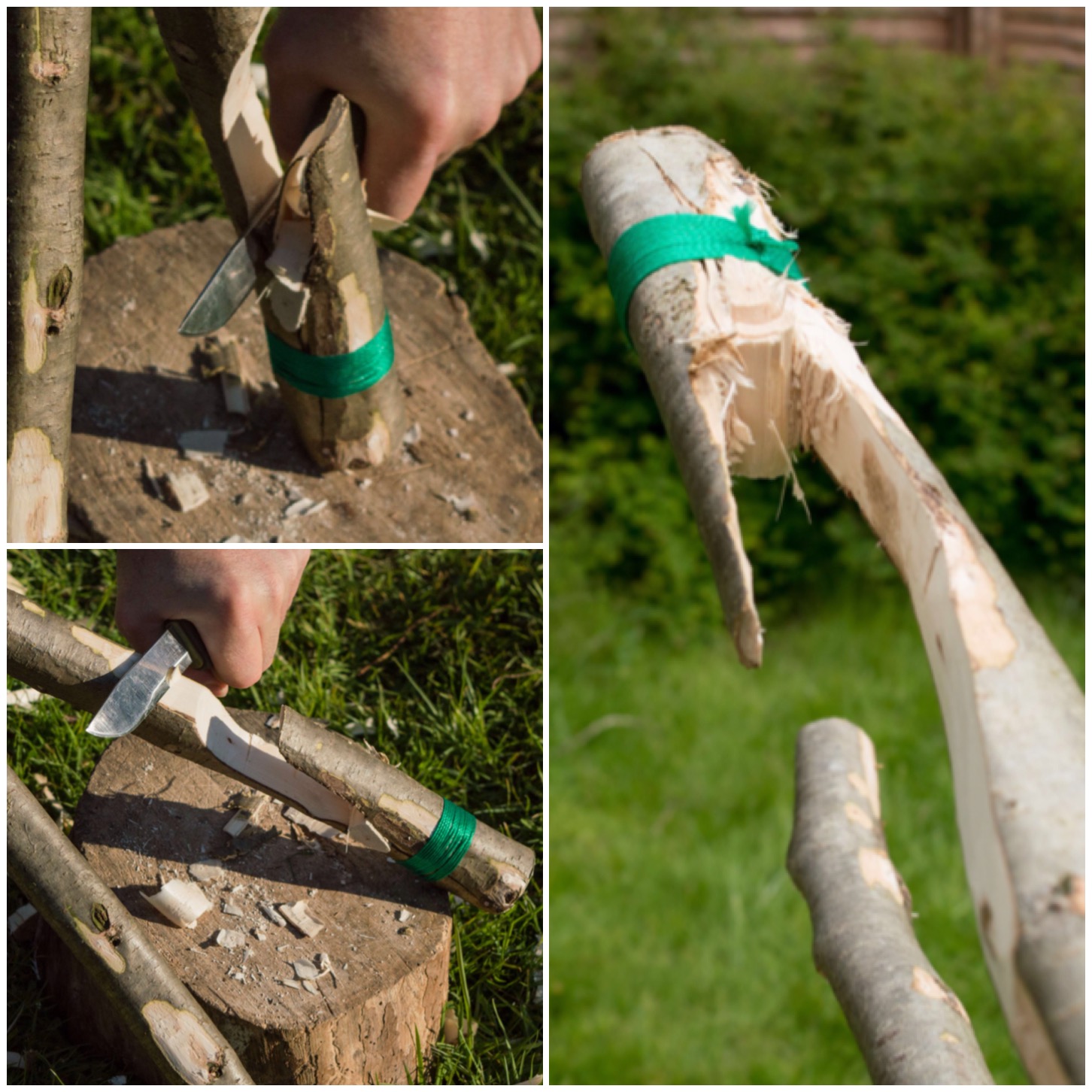
Bottom Limb
I split the lower limb nearly all the way down to the main fork. Do this slowly so that the split remains even on either side.
Make sure you get your angles right so that when the crane is placed on the upright everything fits neatly without twisting.
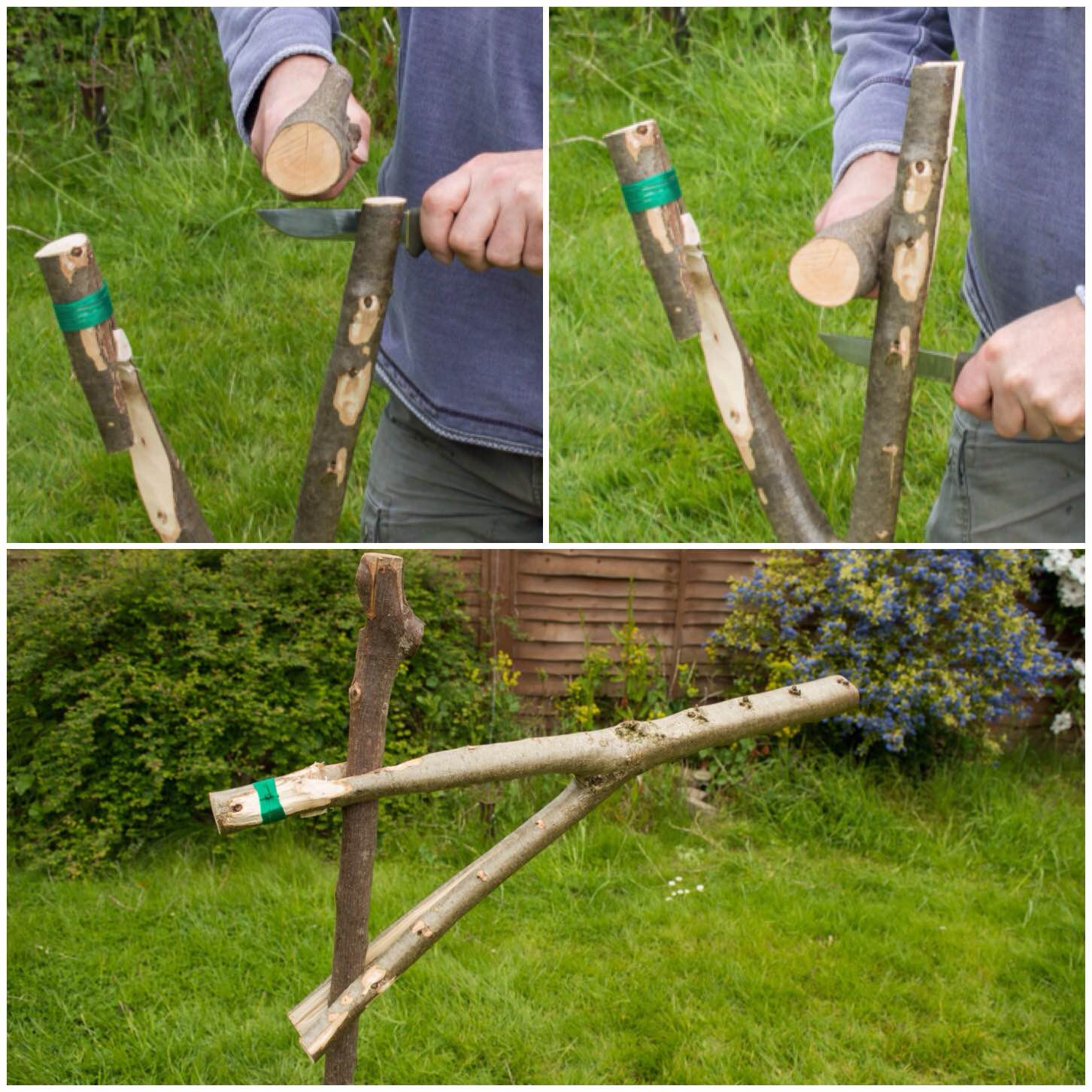
I carved another wedge to fit the lower limb split and whipped string on either side. To finish this section off I trimmed the wedge with my saw.
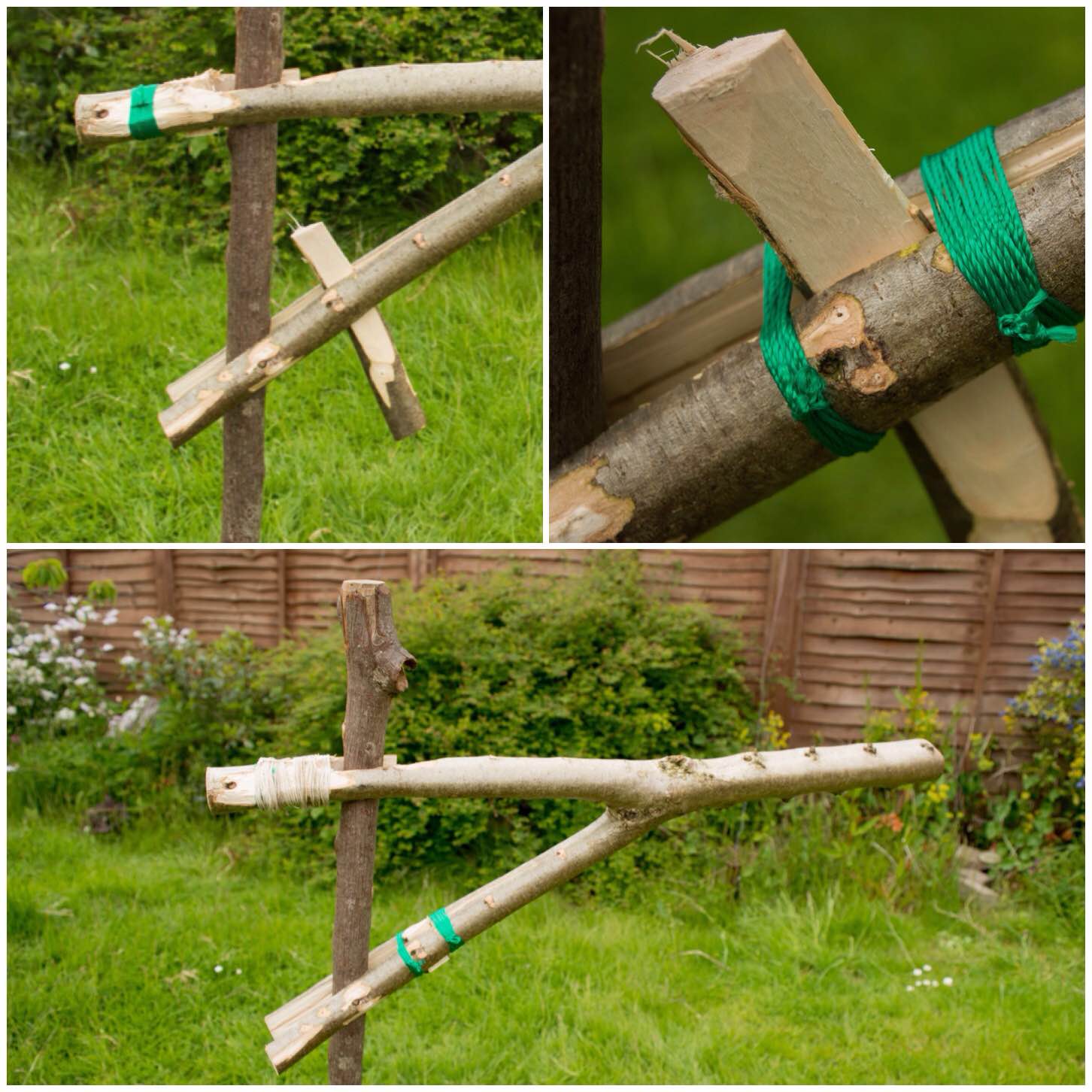
Pot Holder Limb
I removed a lot of wood with my axe and knife from the limb that would become the pot holder bar. I also battoned out some little grooves so as to hang pots safely.
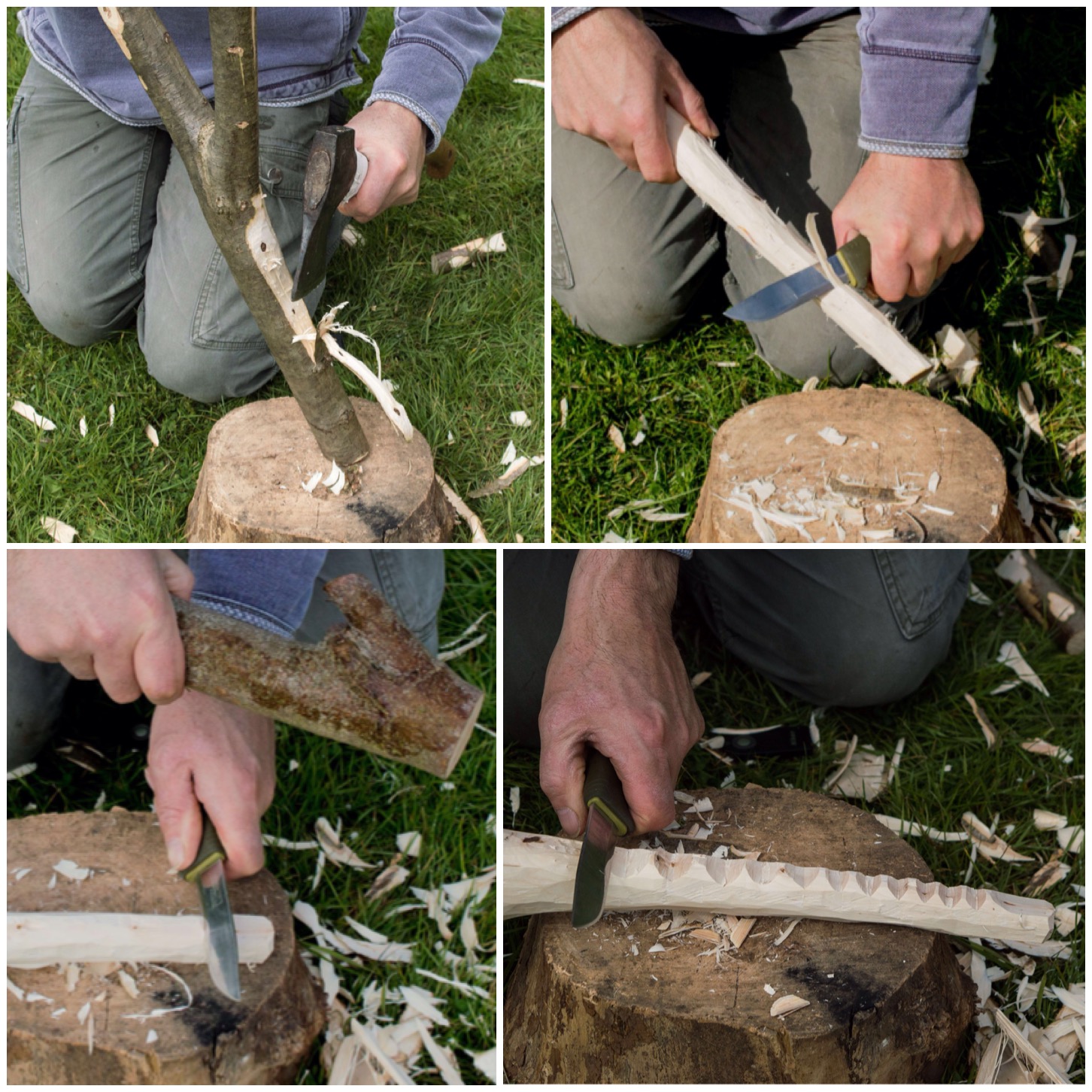
At the end of the bar I also carved out a little recess on which to hang an adjustable pot hook.
After that I added some more binding to the top bar to make it really bomb proof.
That’s it in terms of construction.
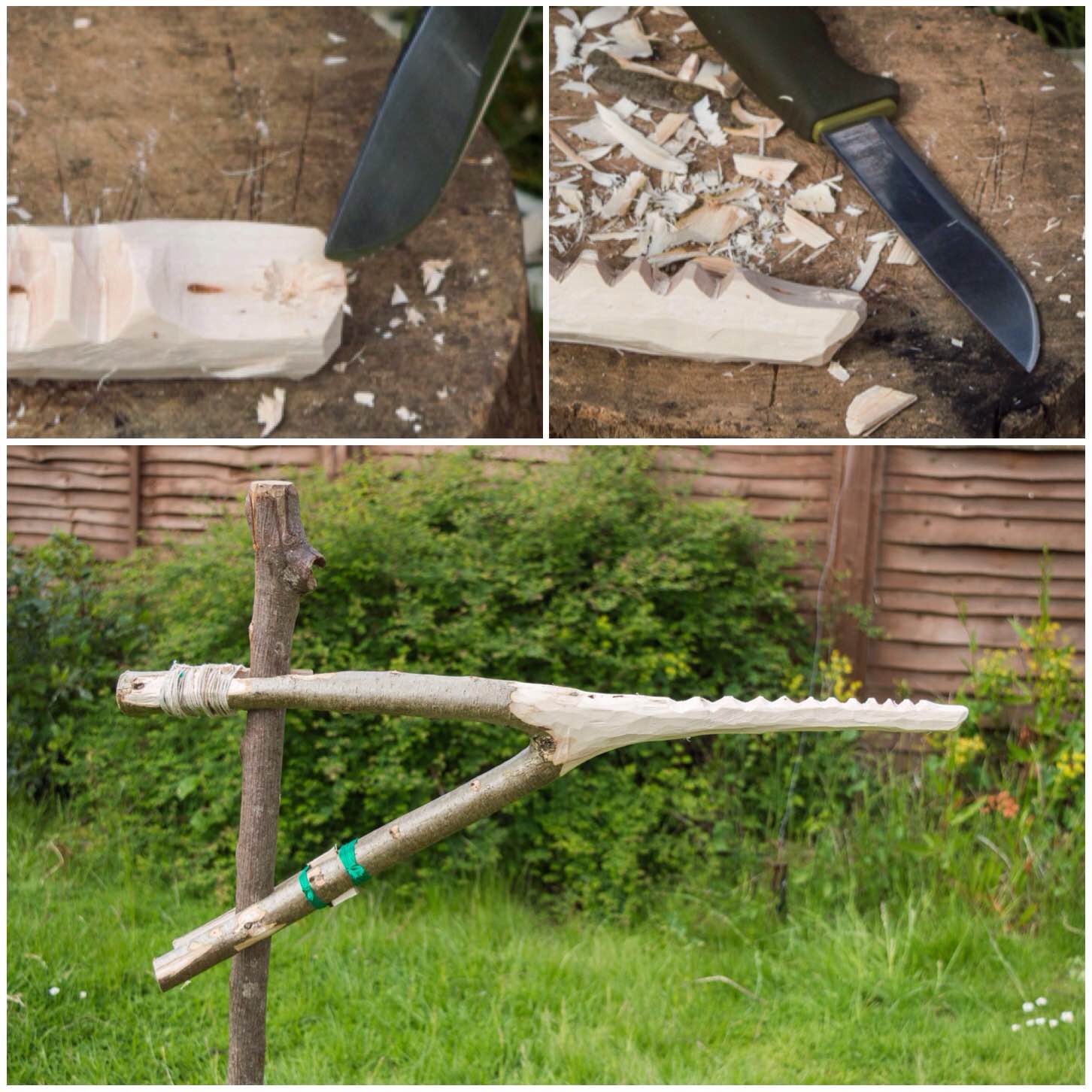
Aures crane in action
All the hard work is done now so all you have to do is light your fire, insert the upright, attach the crane and pot, adjust the height for optimum cooking and sit back.
The picture at the bottom shows how you can also attach an adjustable pot hook to the end if you want.
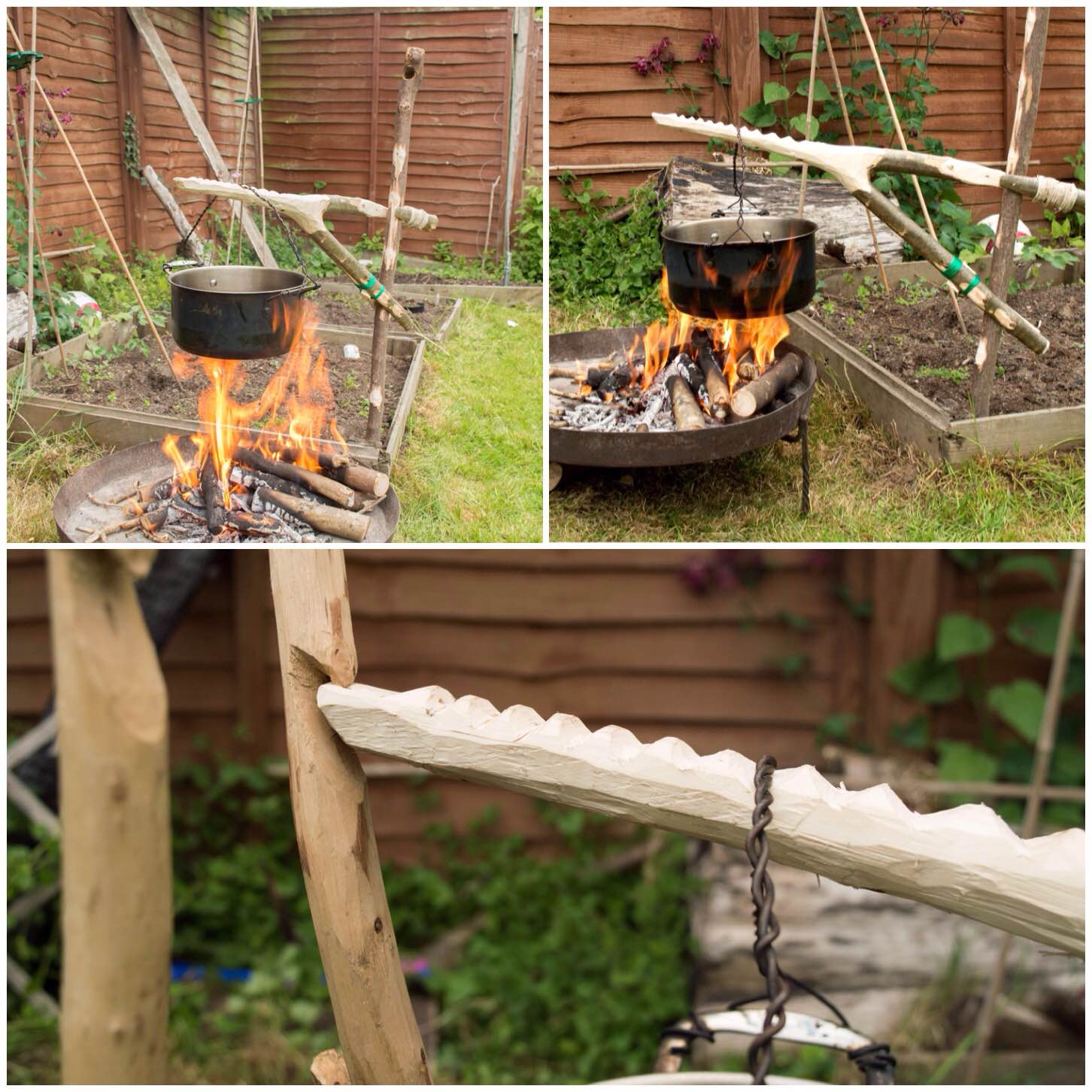
I have attached the Aures crane to the upright for my fixed crane allowing me to hang multiple pots. I have discussed how to make a fixed crane in my previous post How To…. Build a Campfire Cooking Crane.
The adjustable pot hook is only needed if you want different temperatures for the pots hanging off the Aures crane.
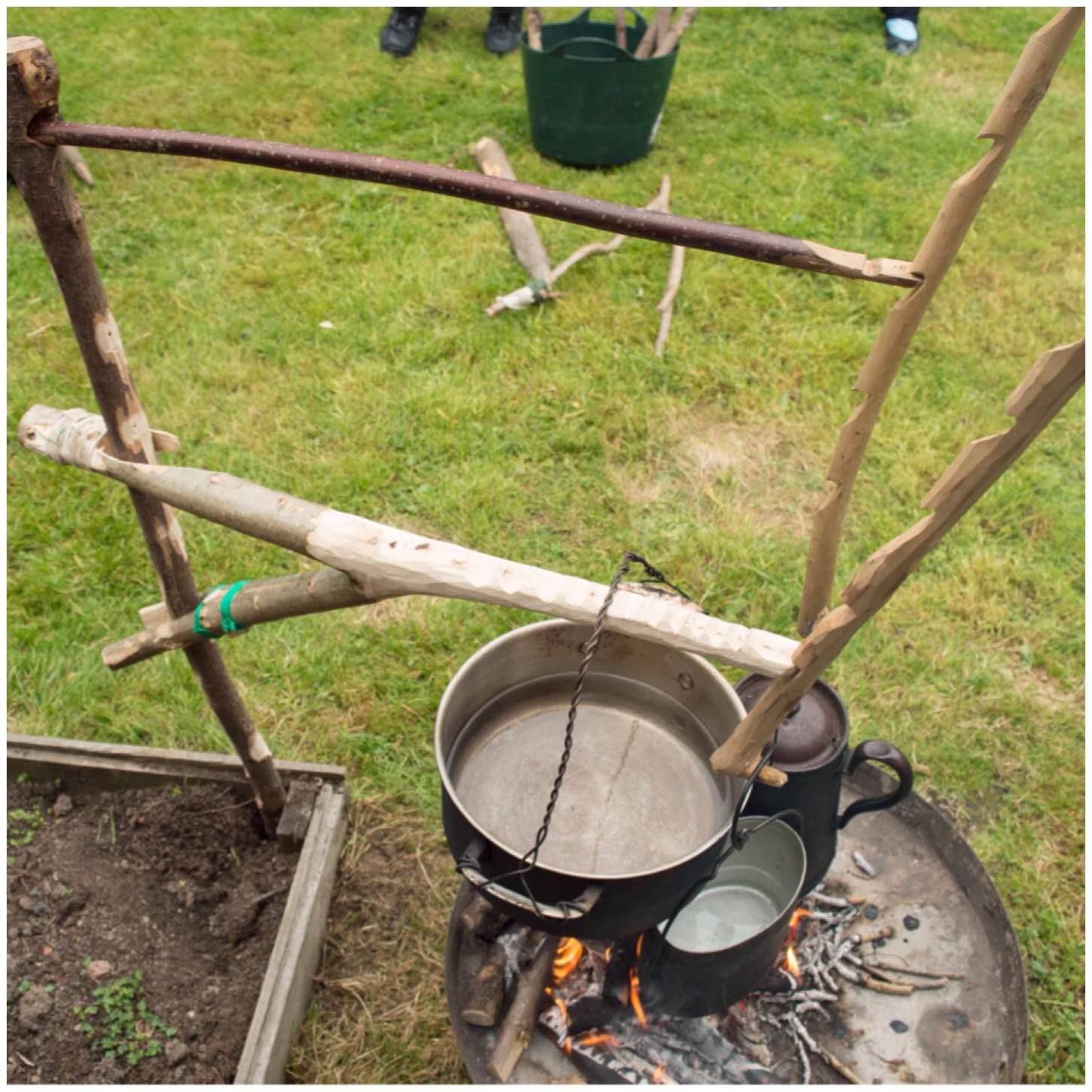
If you are happy for both pots to be at the same height both can be hung directly off your pot bar if it is long enough.
The crane is easy to adjust for height with the pots attached and you can easily swing it away from the heat when required.
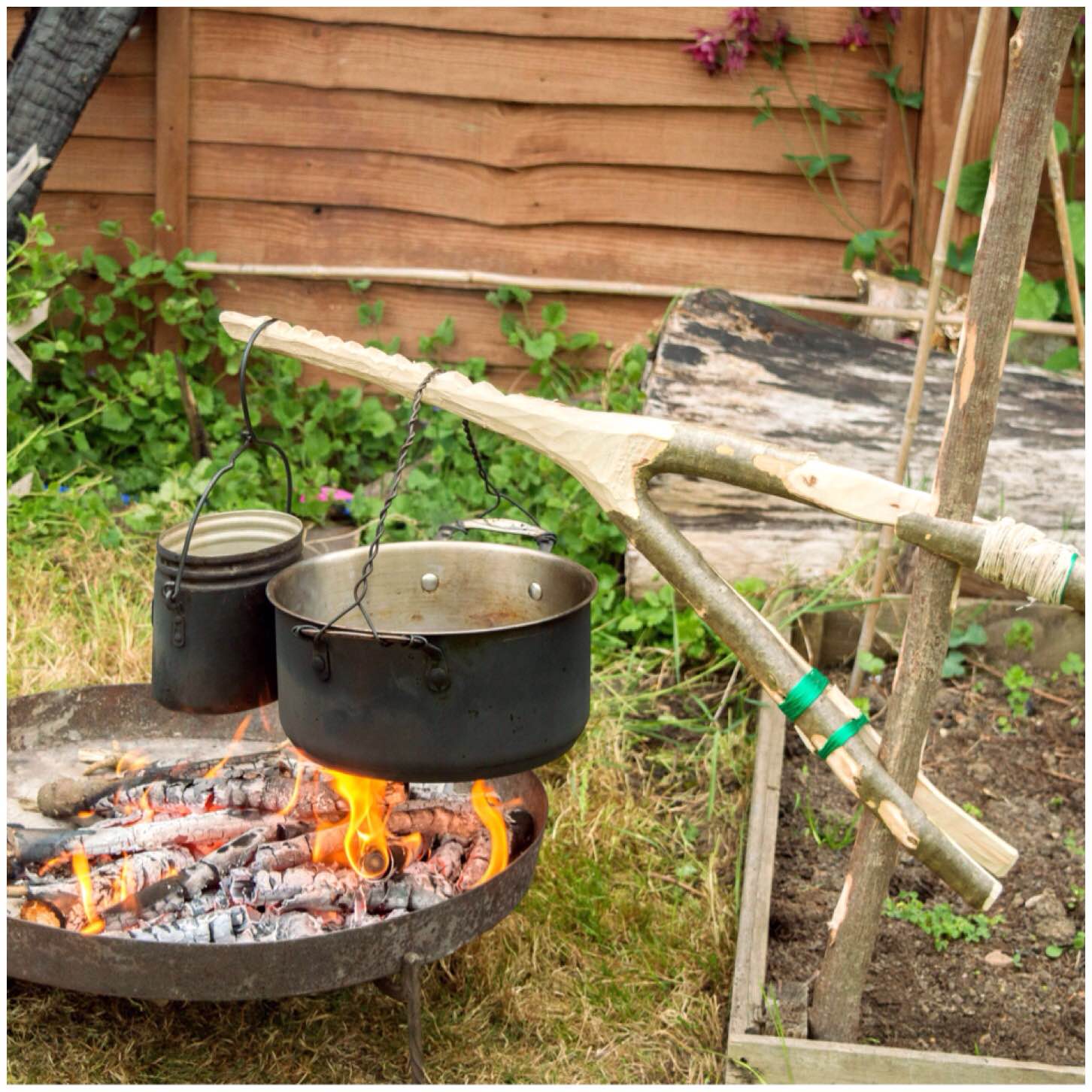
A view from above – one upright – two cranes – three pots
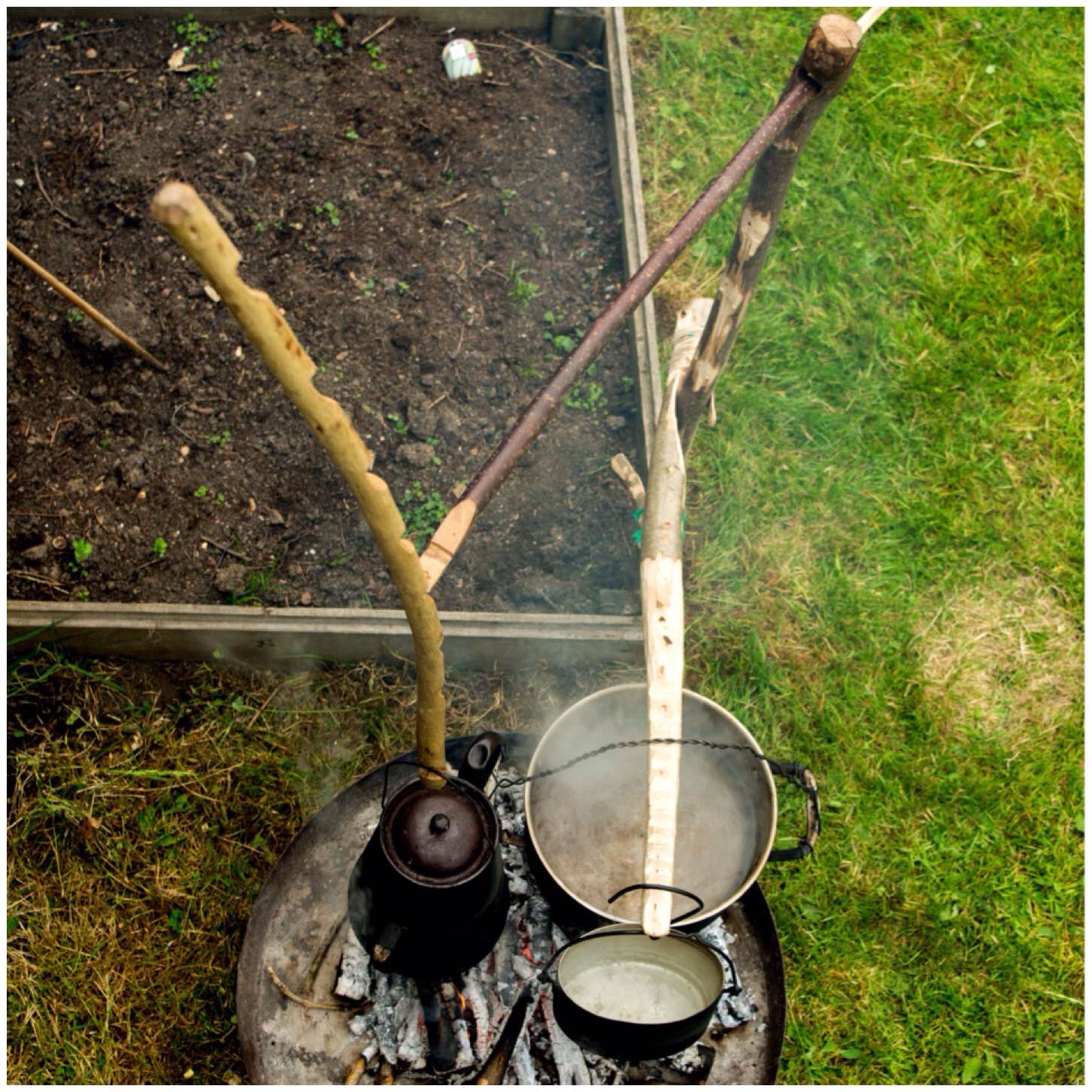
Do not be put off by the length of the instructions: this crane is very easy to make. Some of my bushcraft friends say that it’s not worth the bother – that may be so for a short term camp but if you want to practice your carving skills it’s perfect for the job.
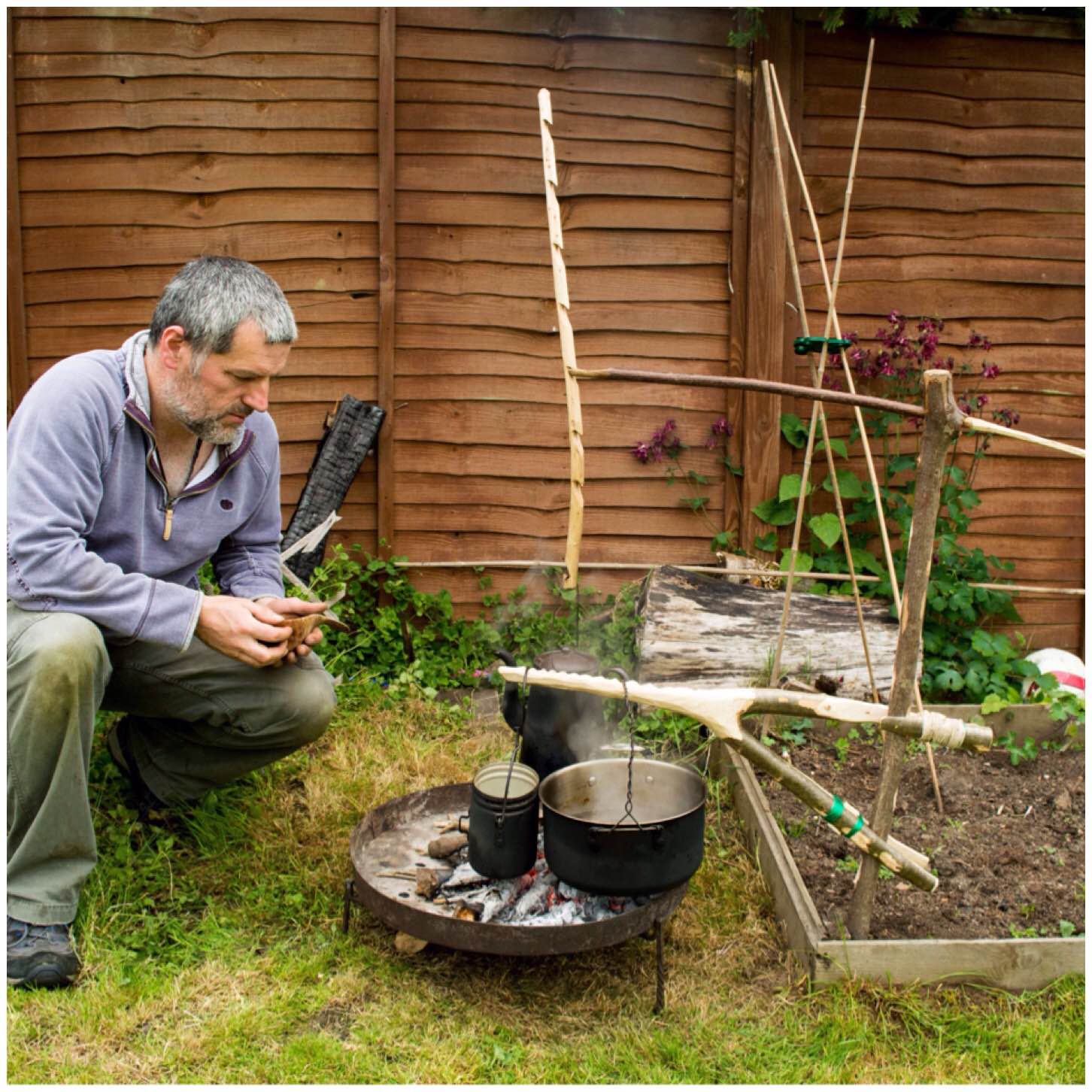
I have a feeling I may be writing about a few of the other variations of the Aures crane in the near future.
Cheers and happy carving.
George


